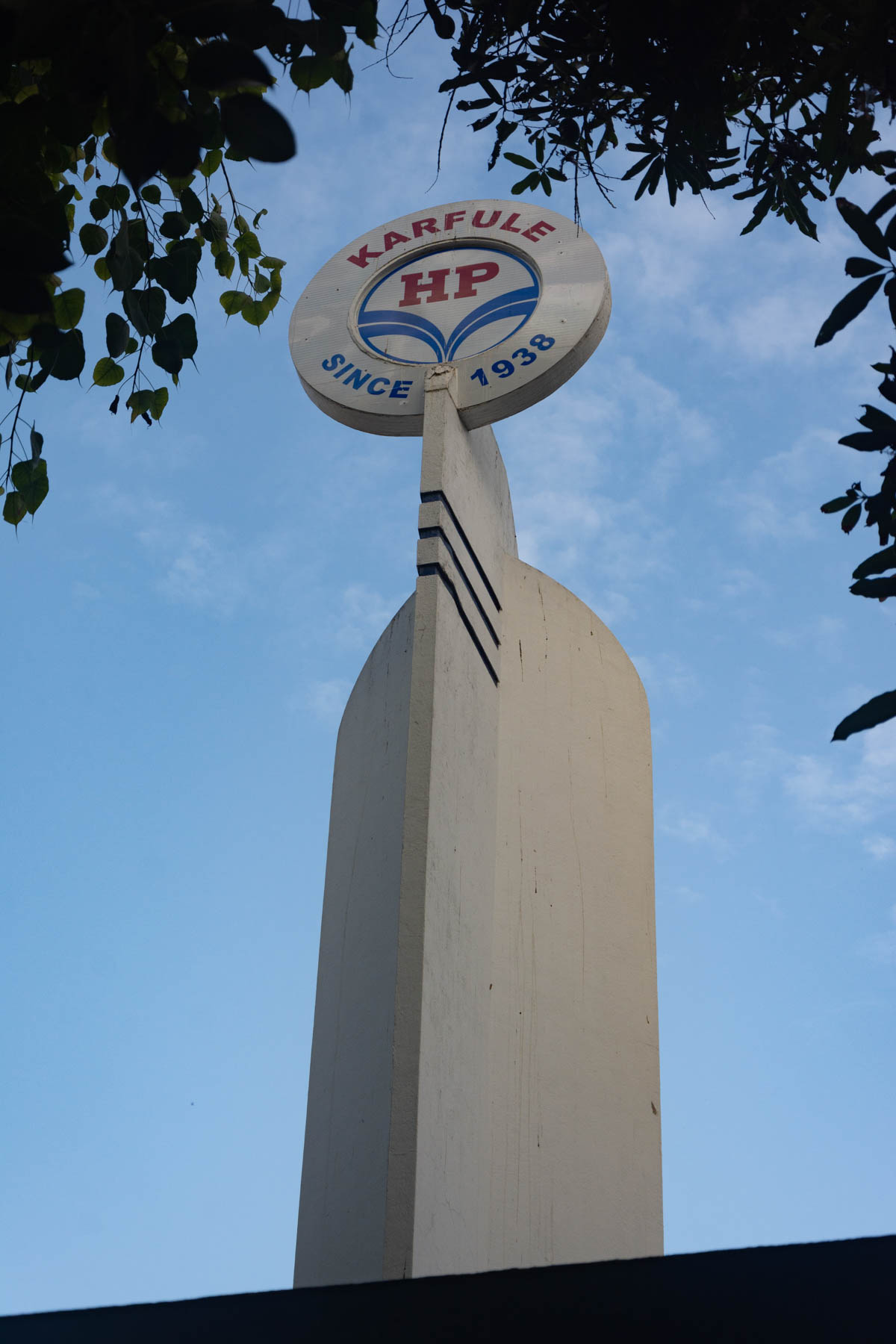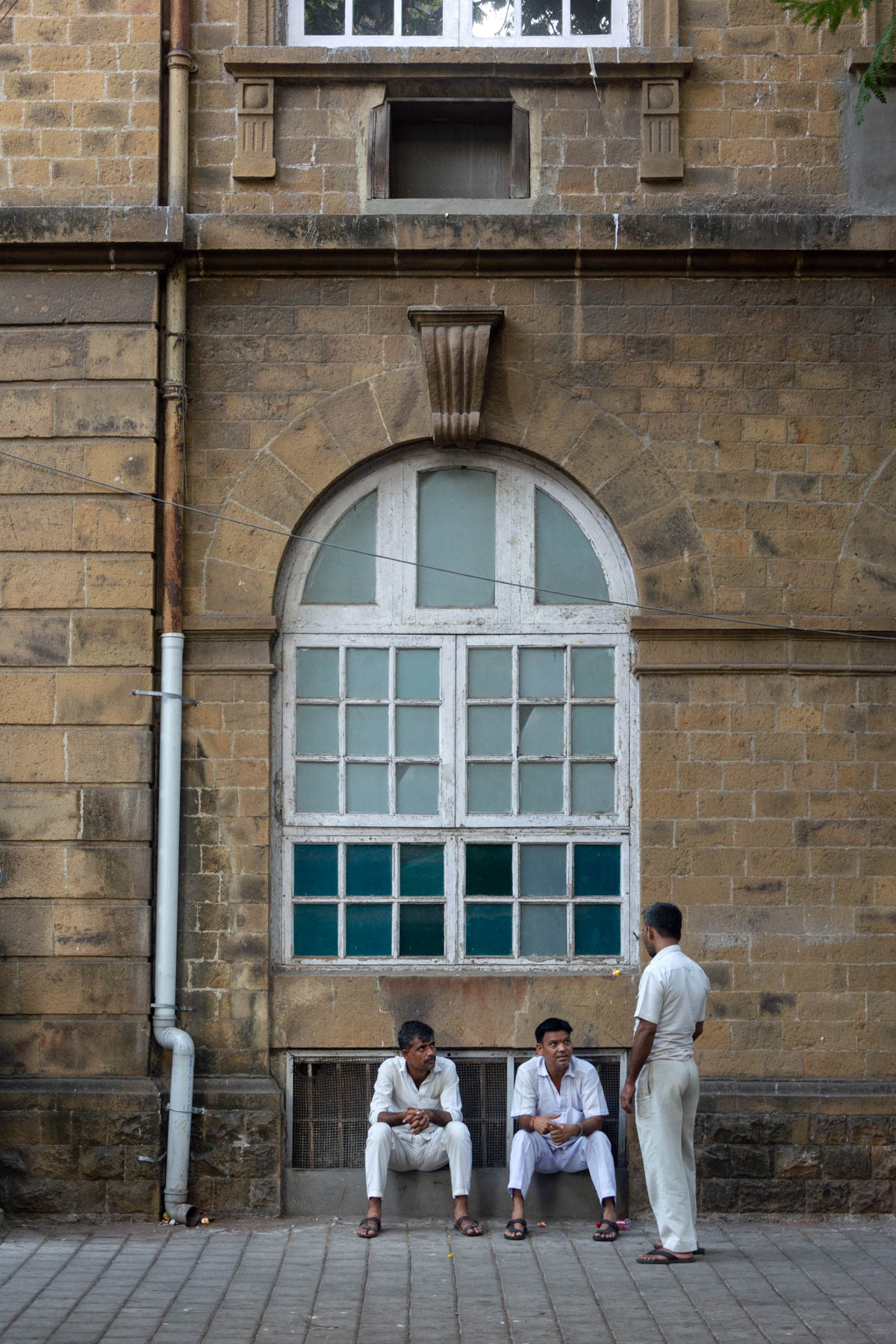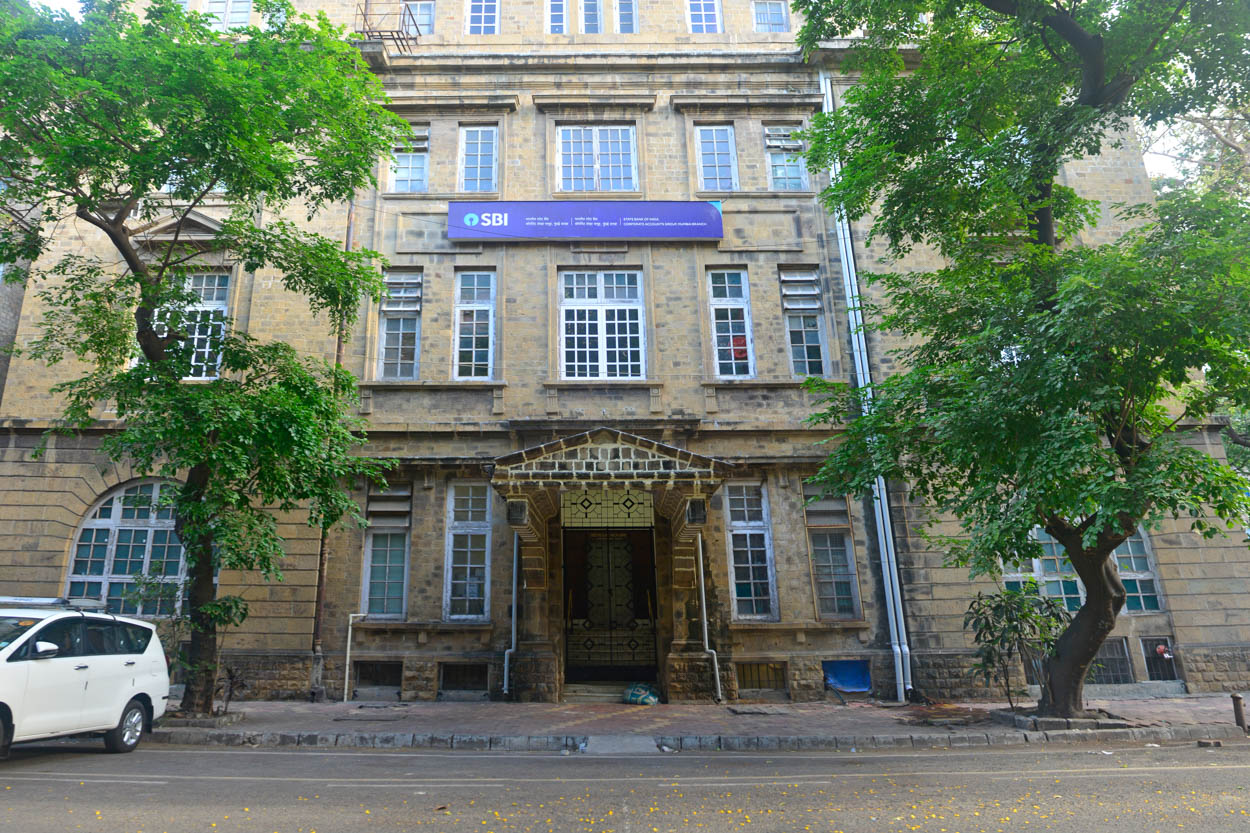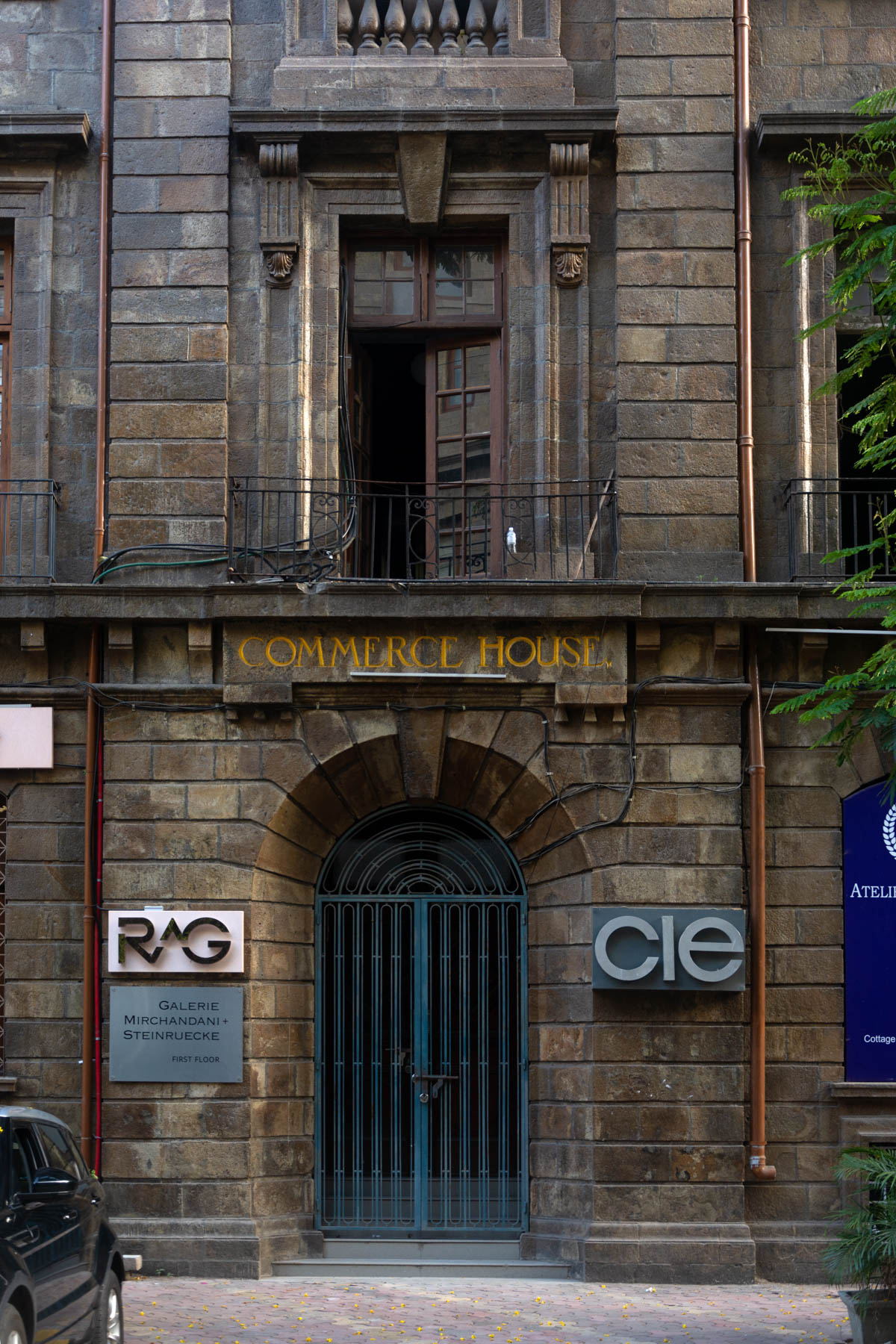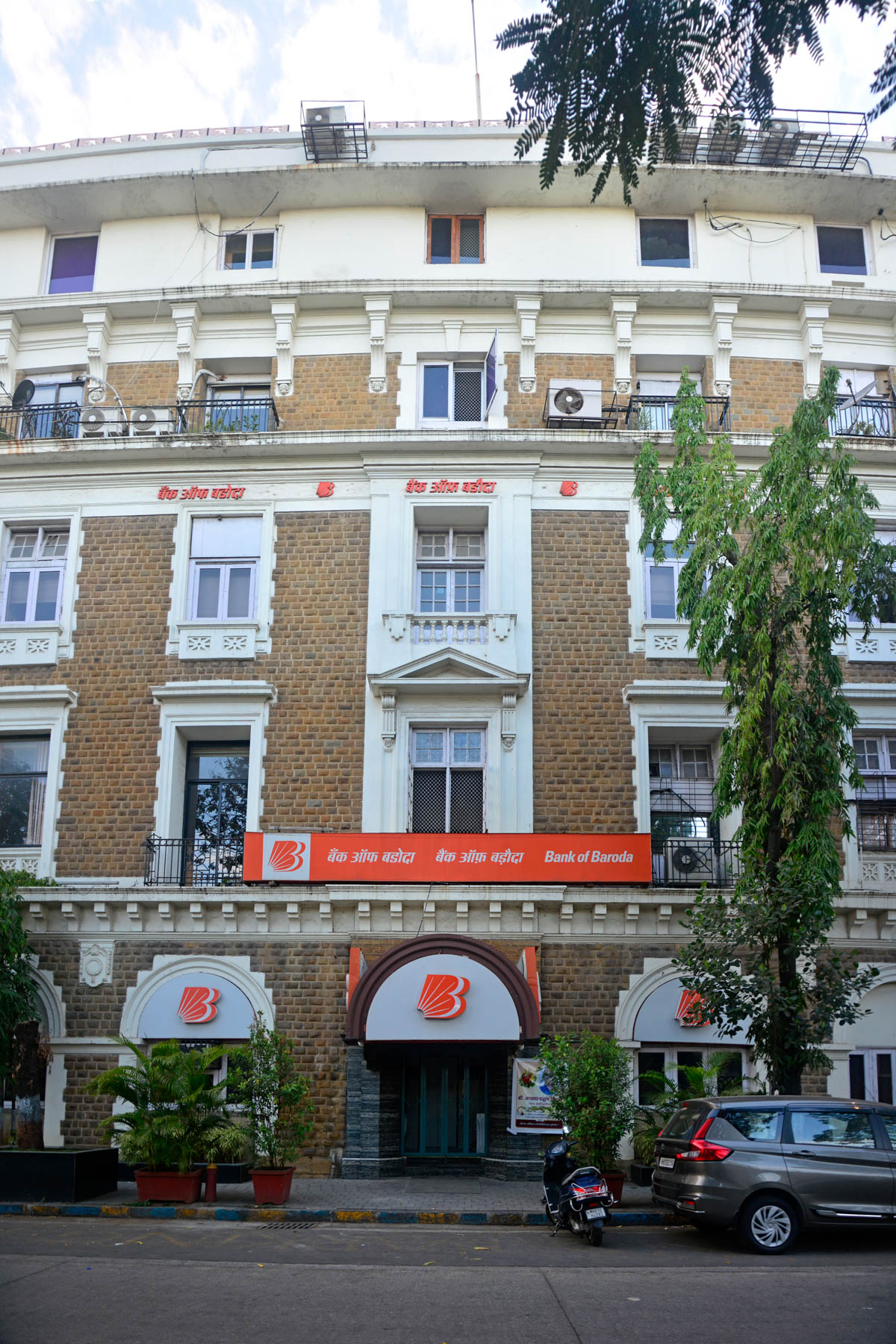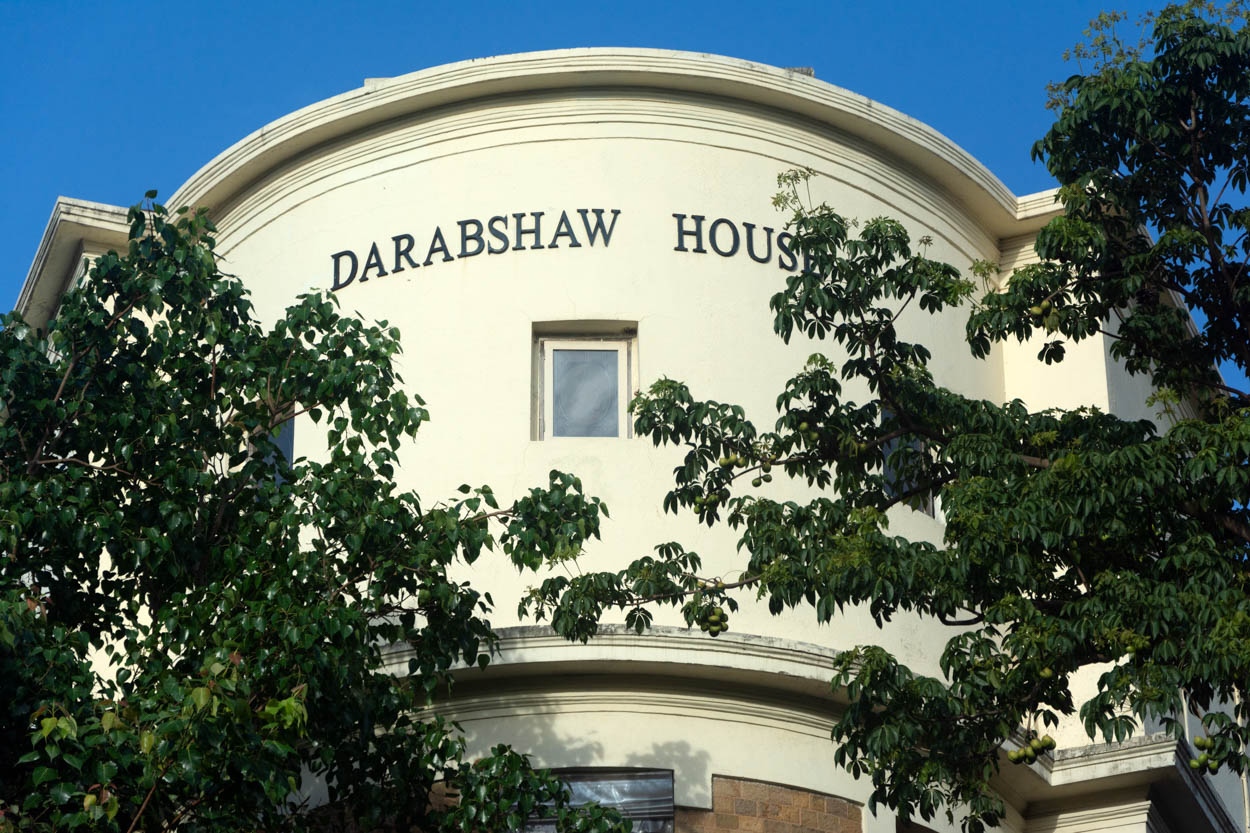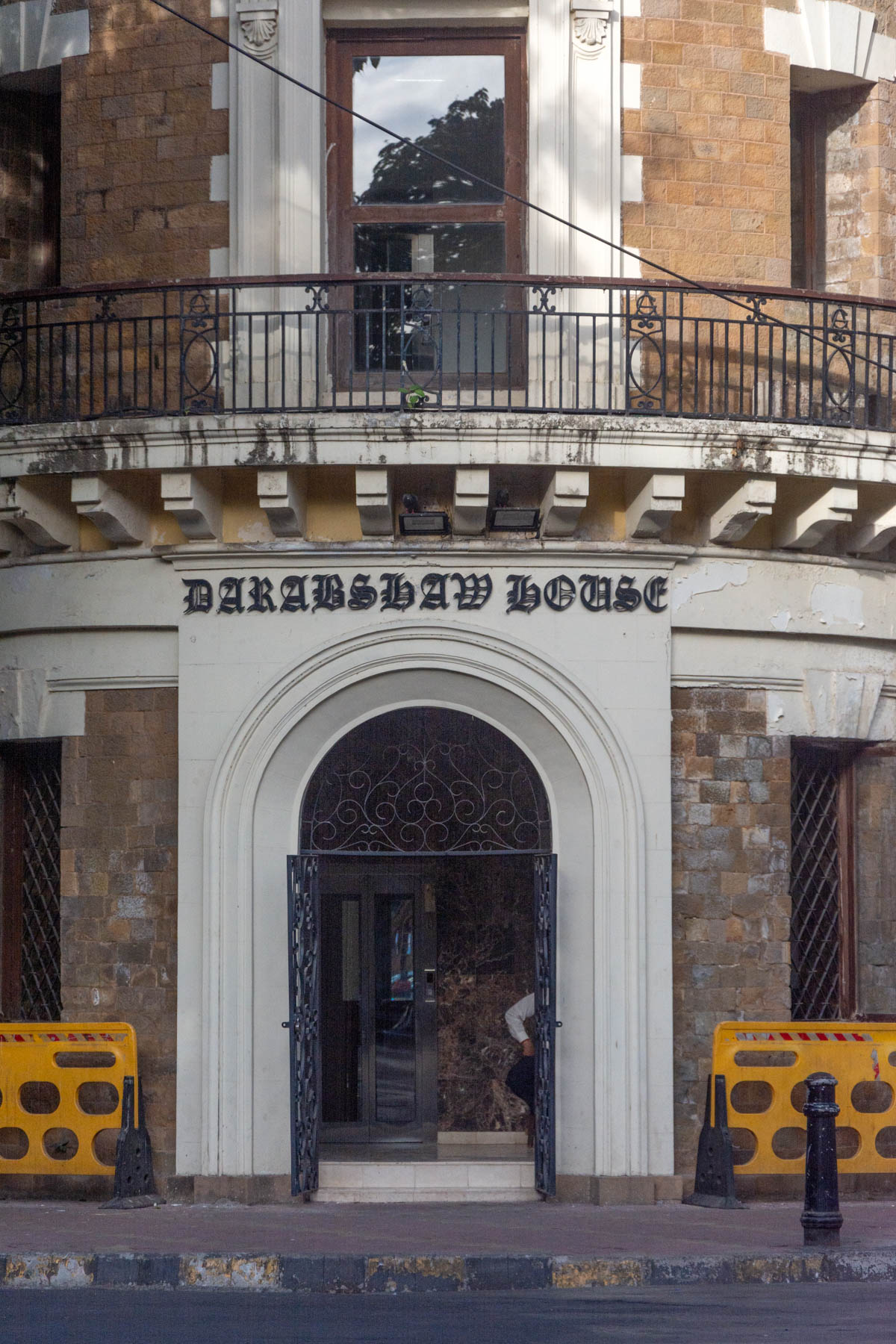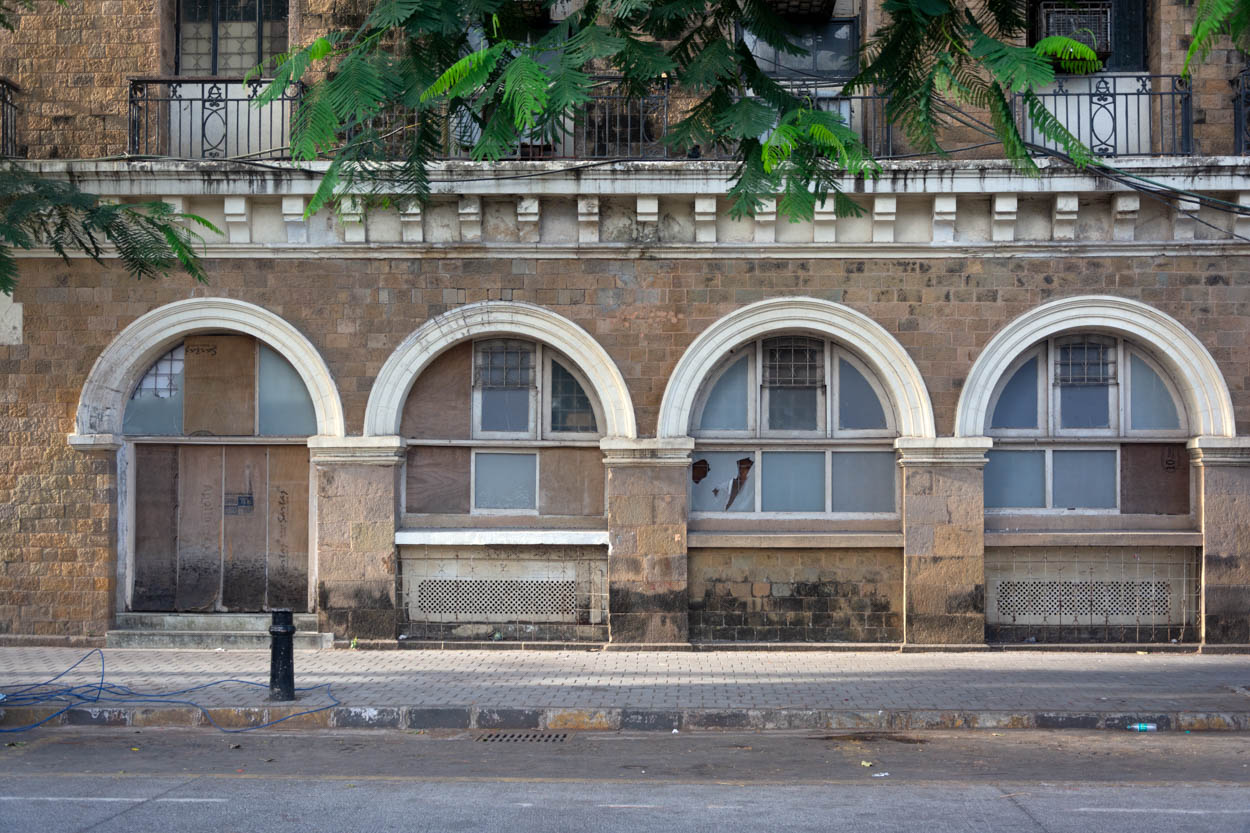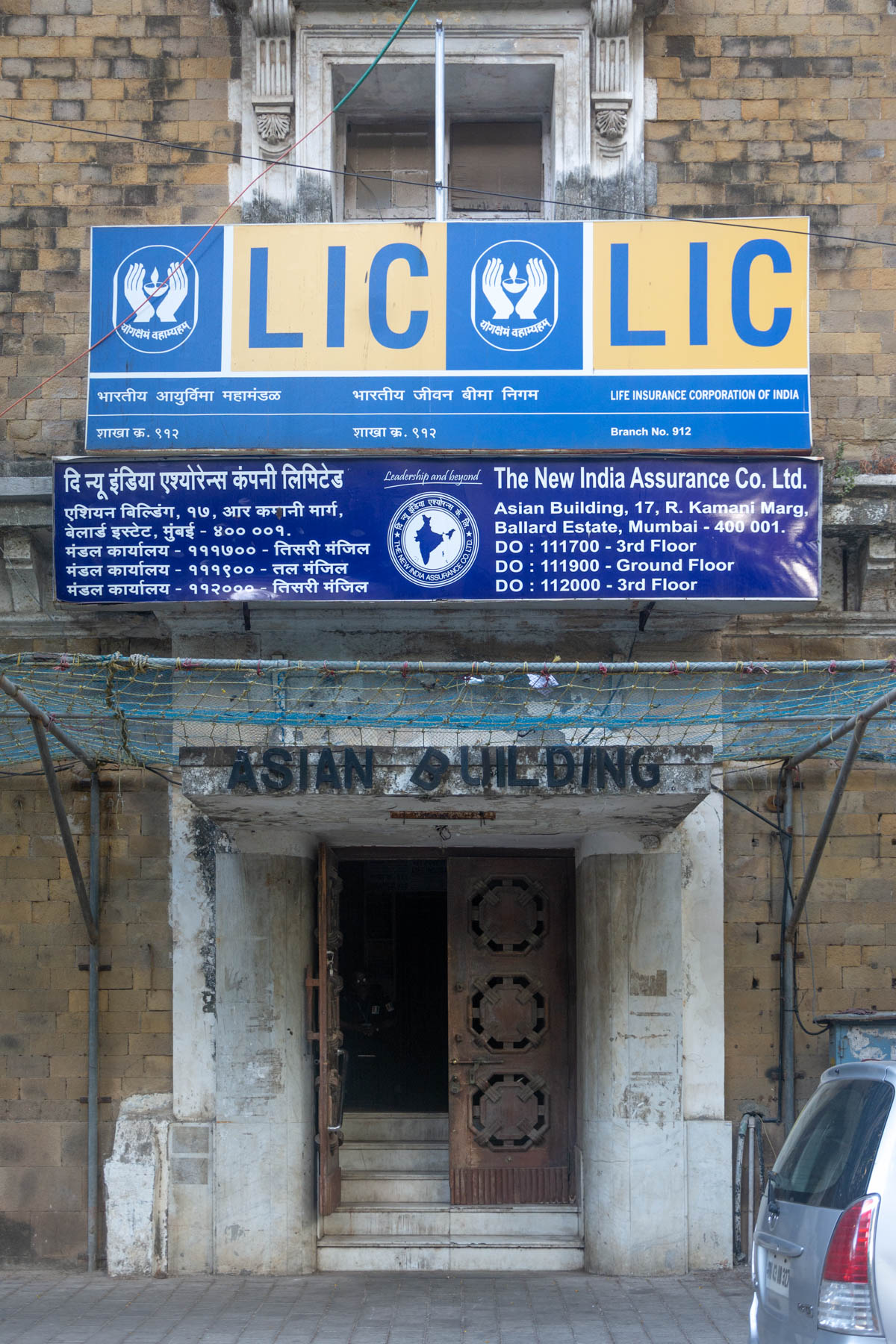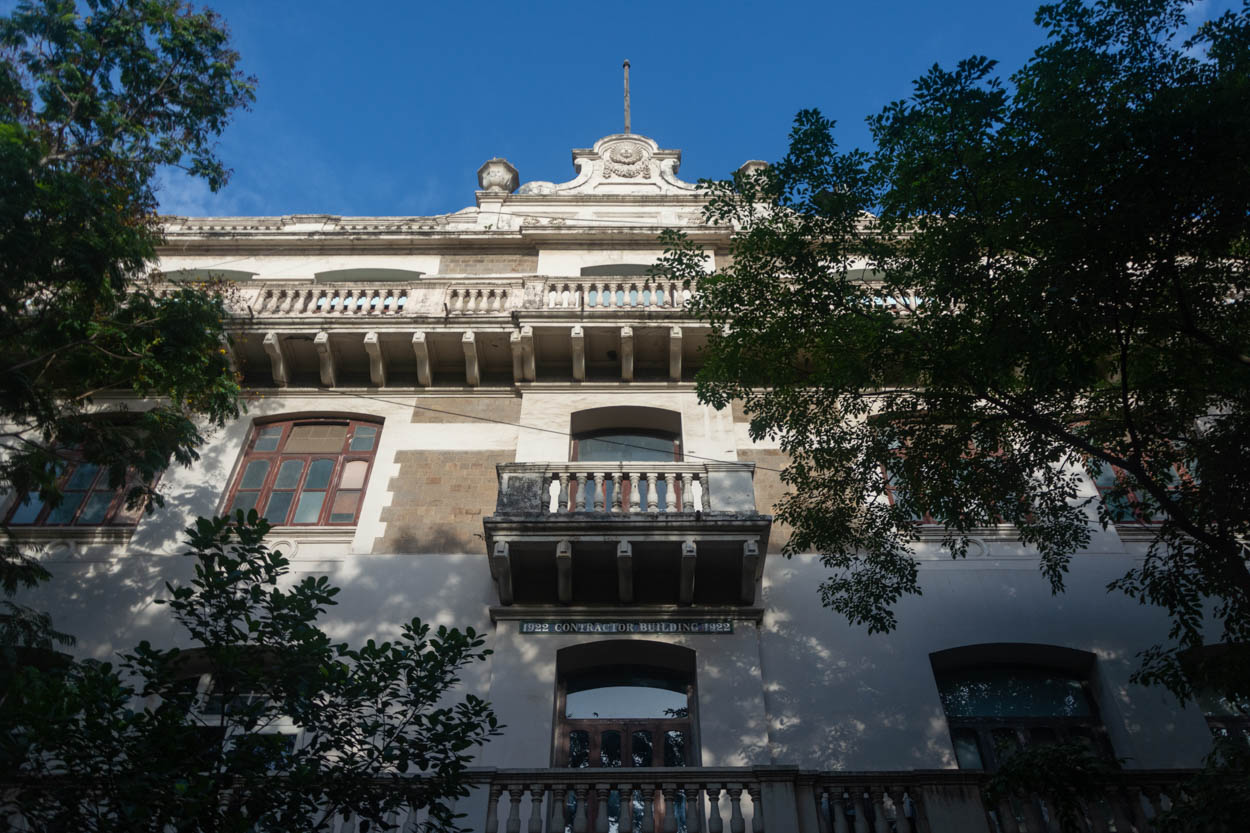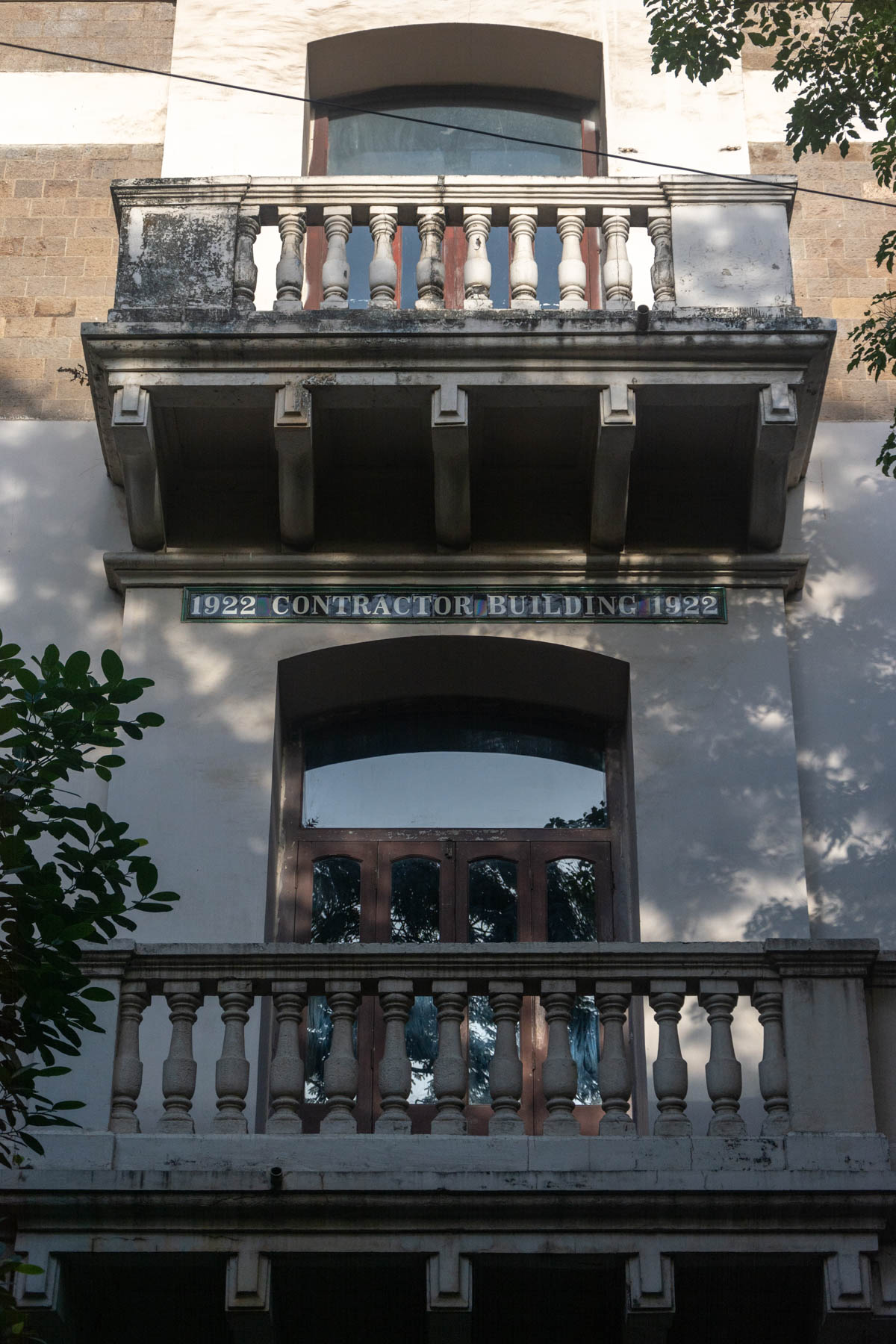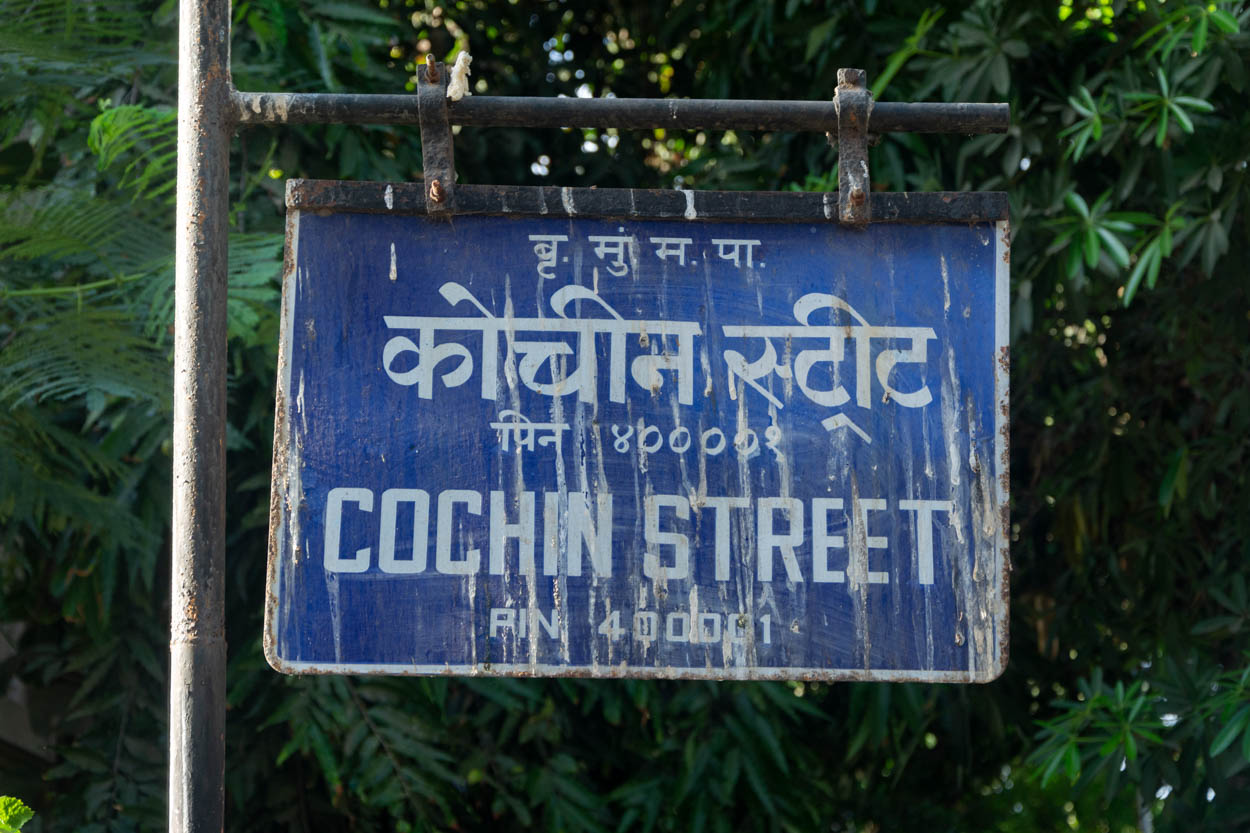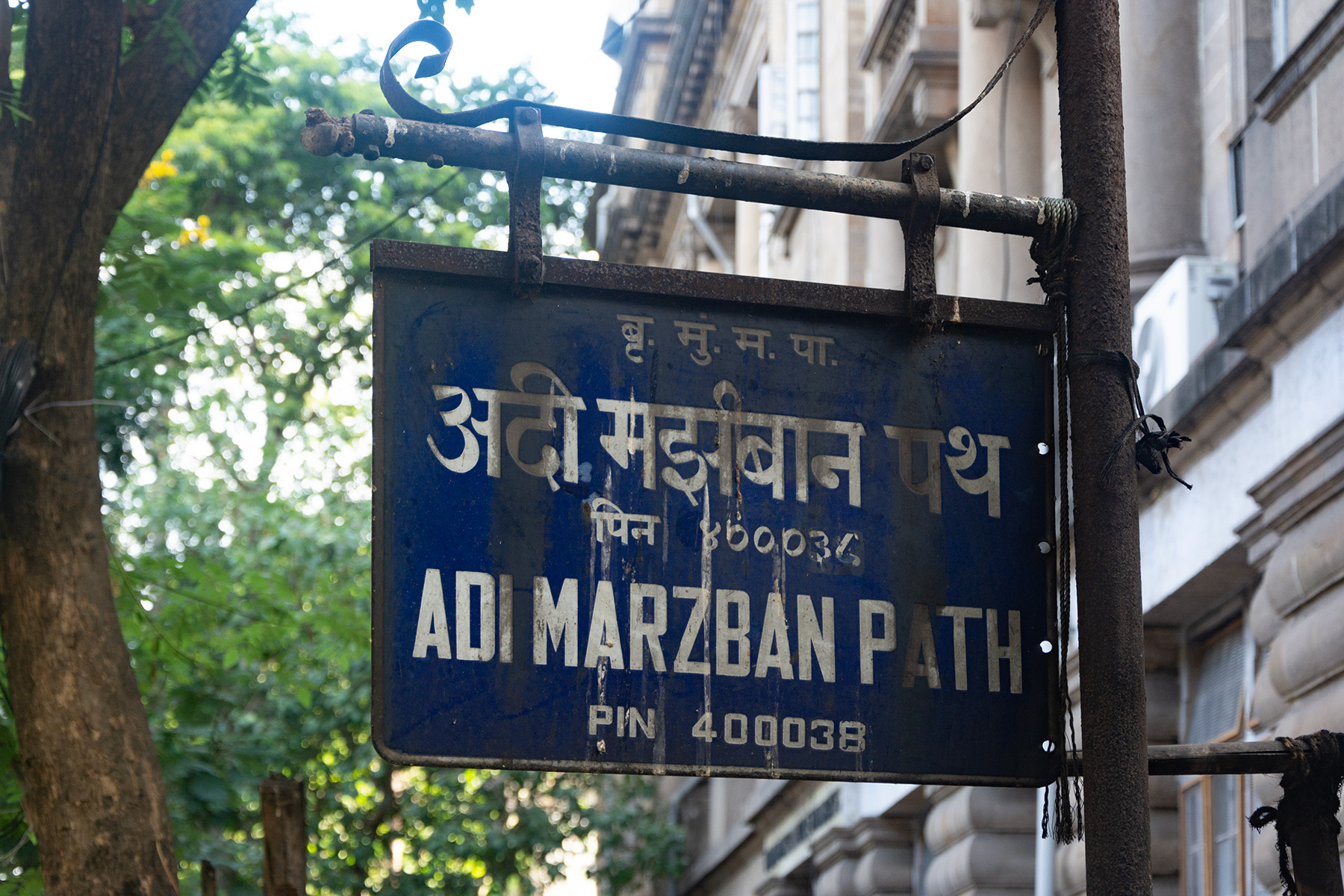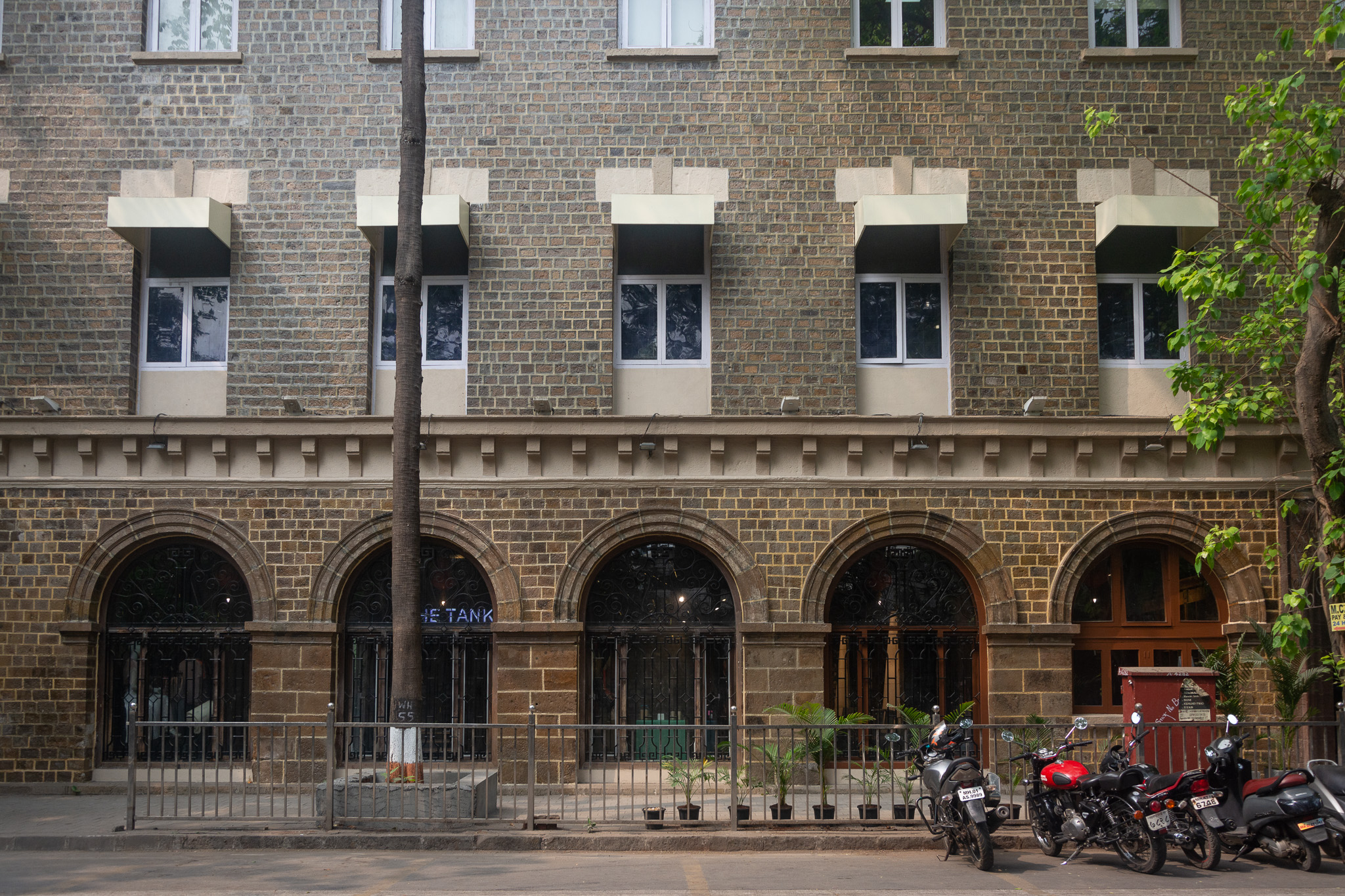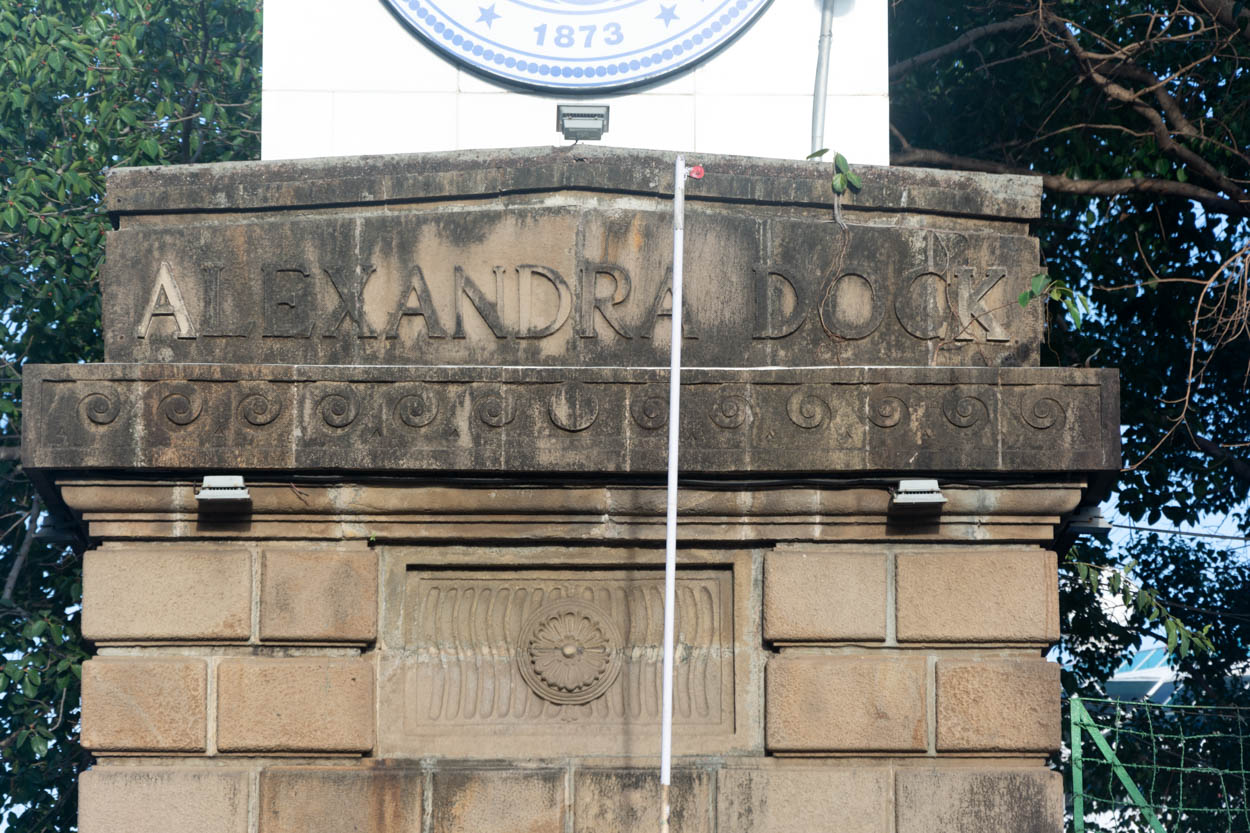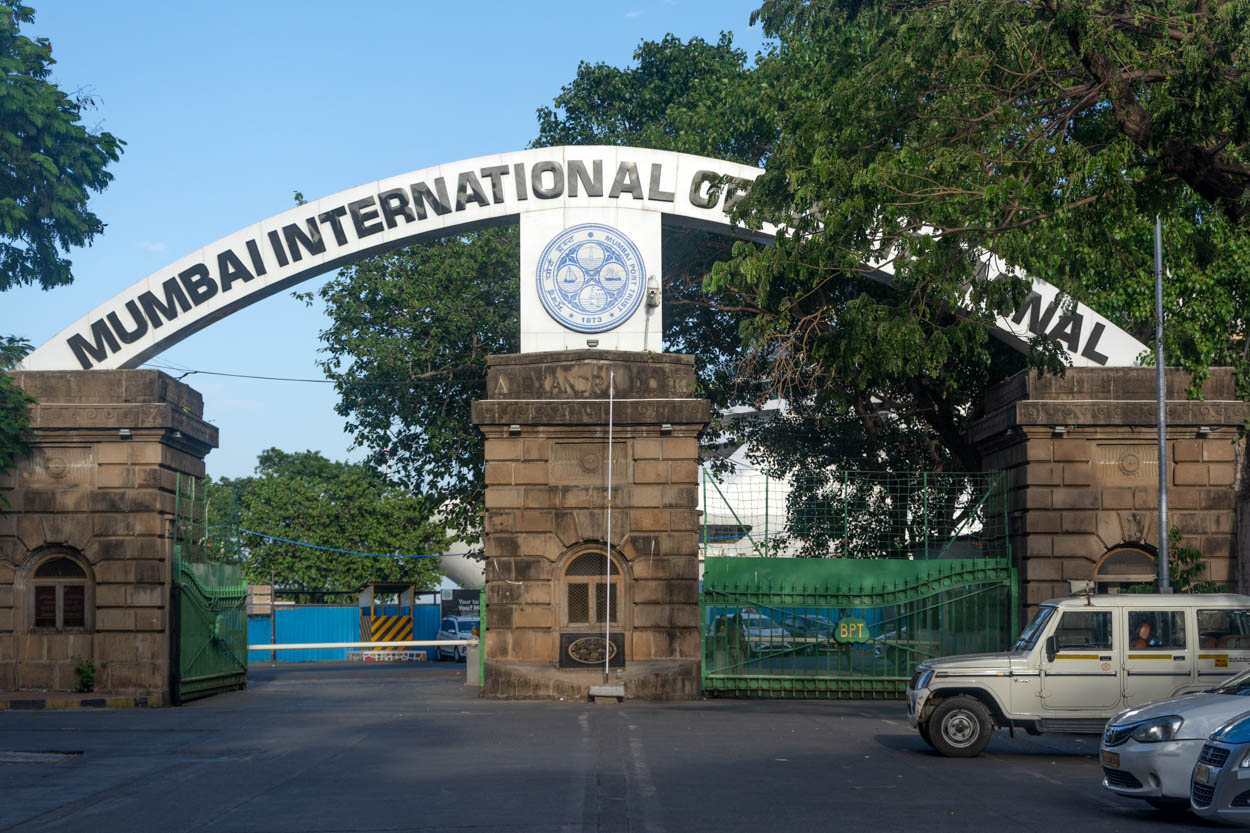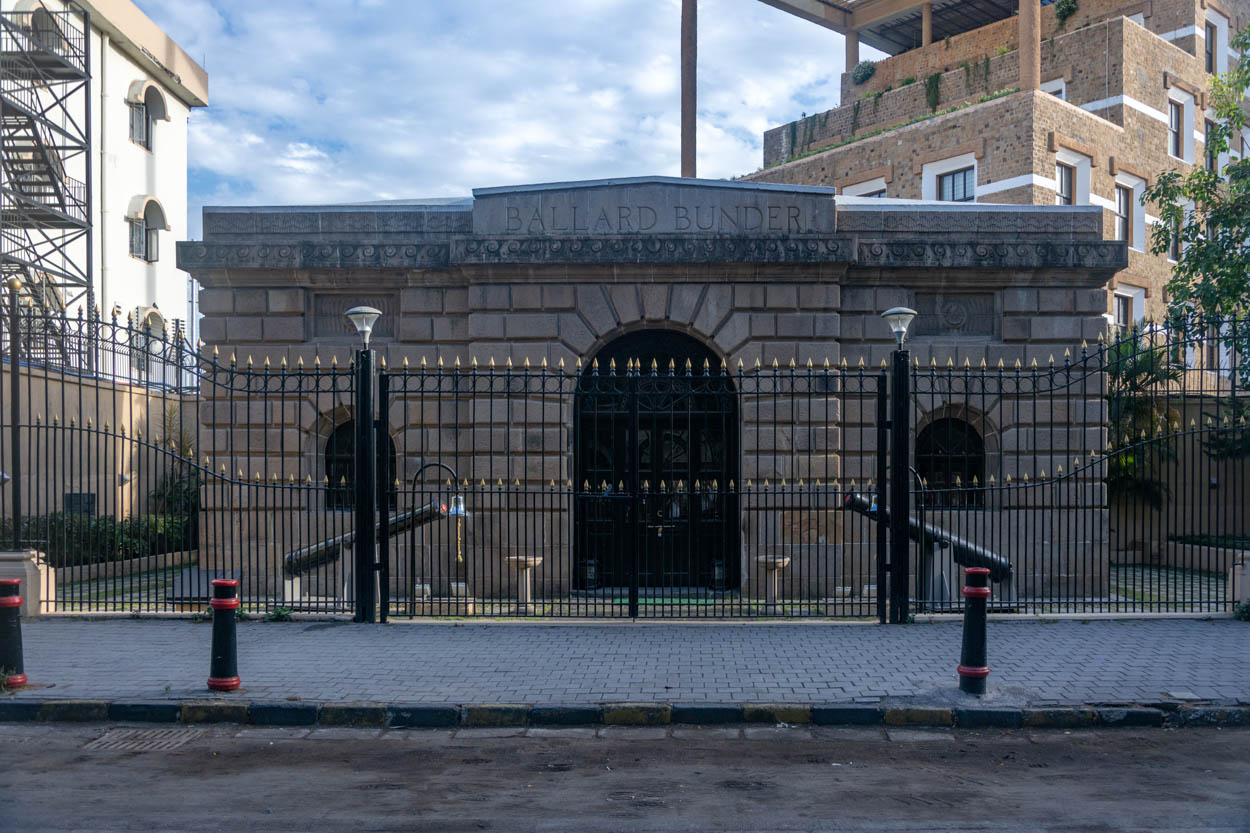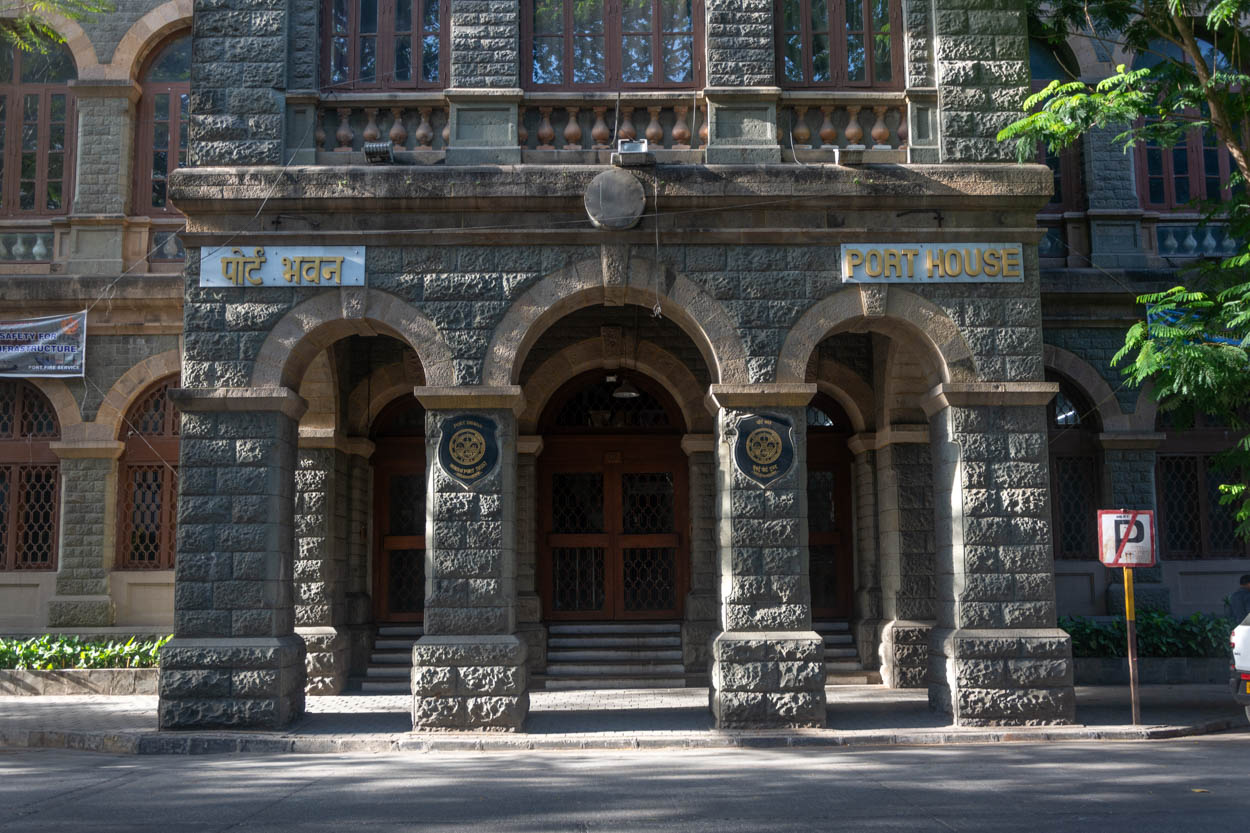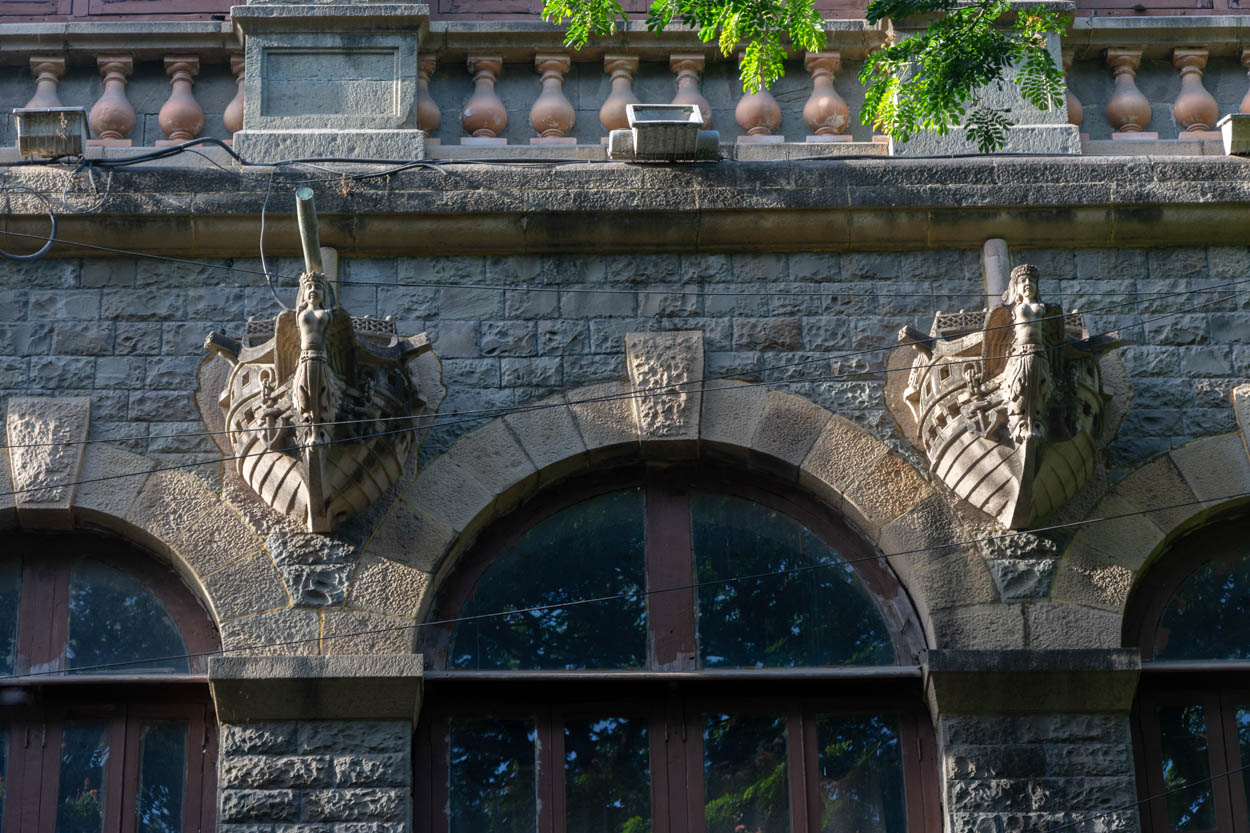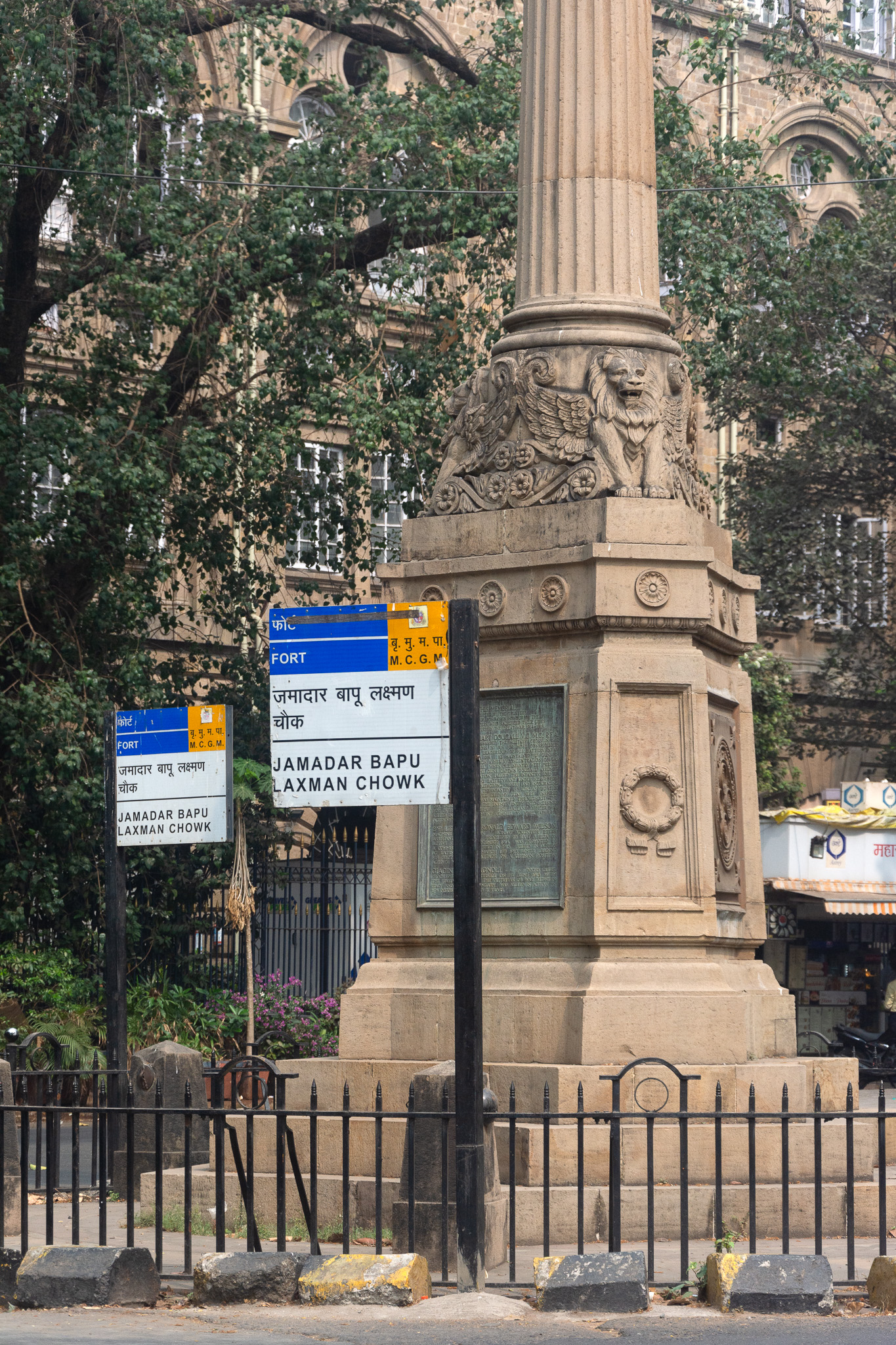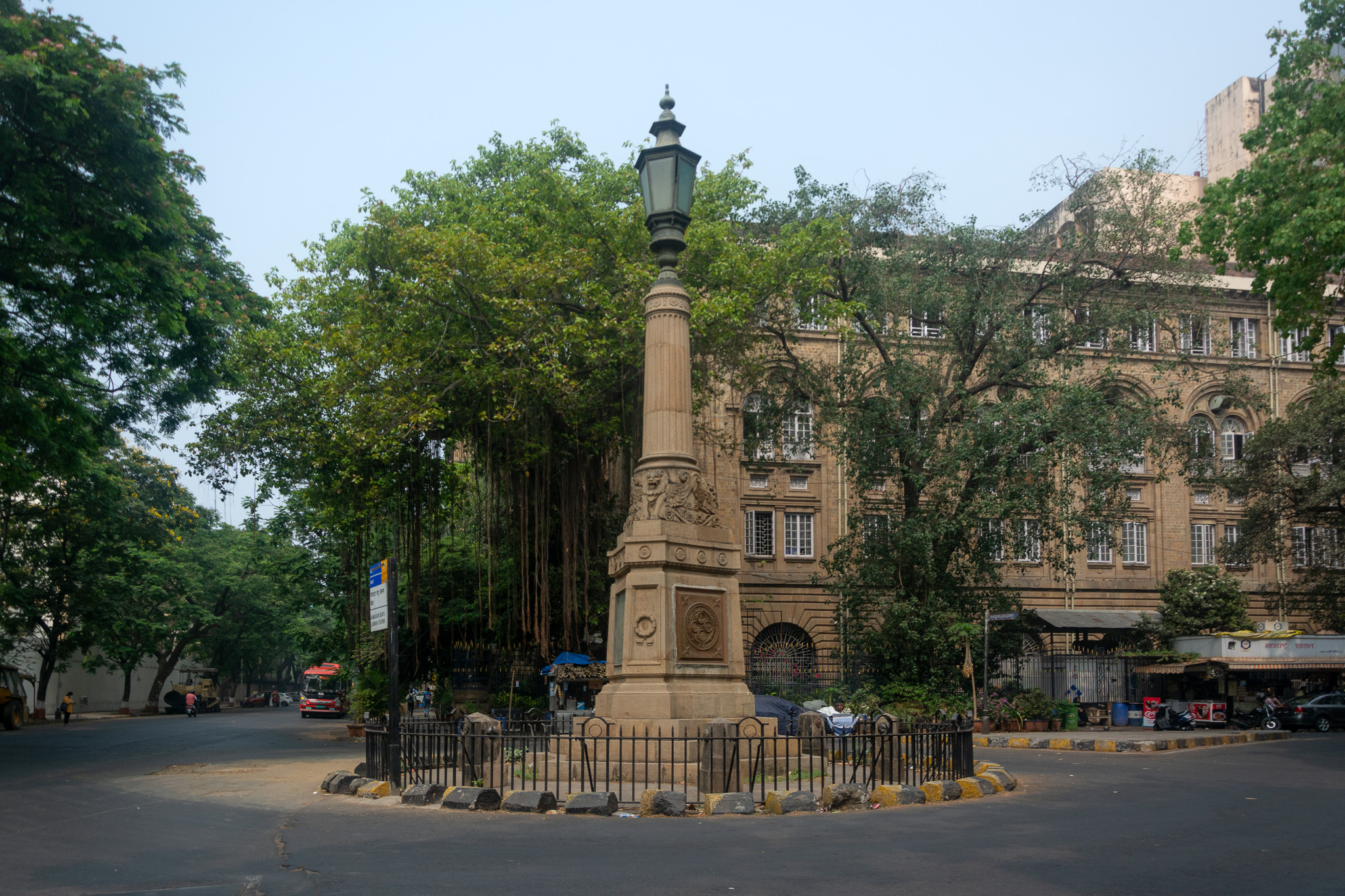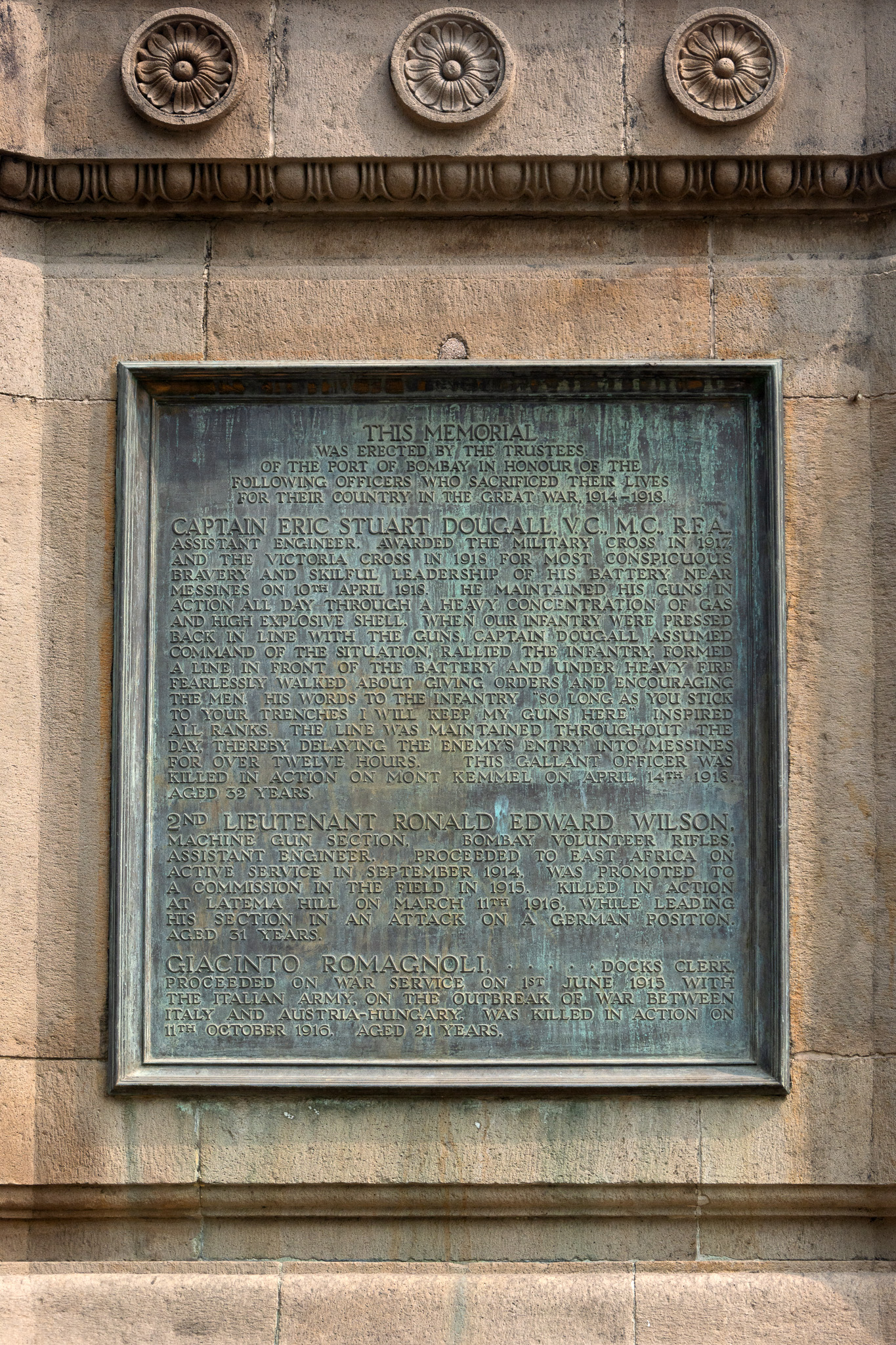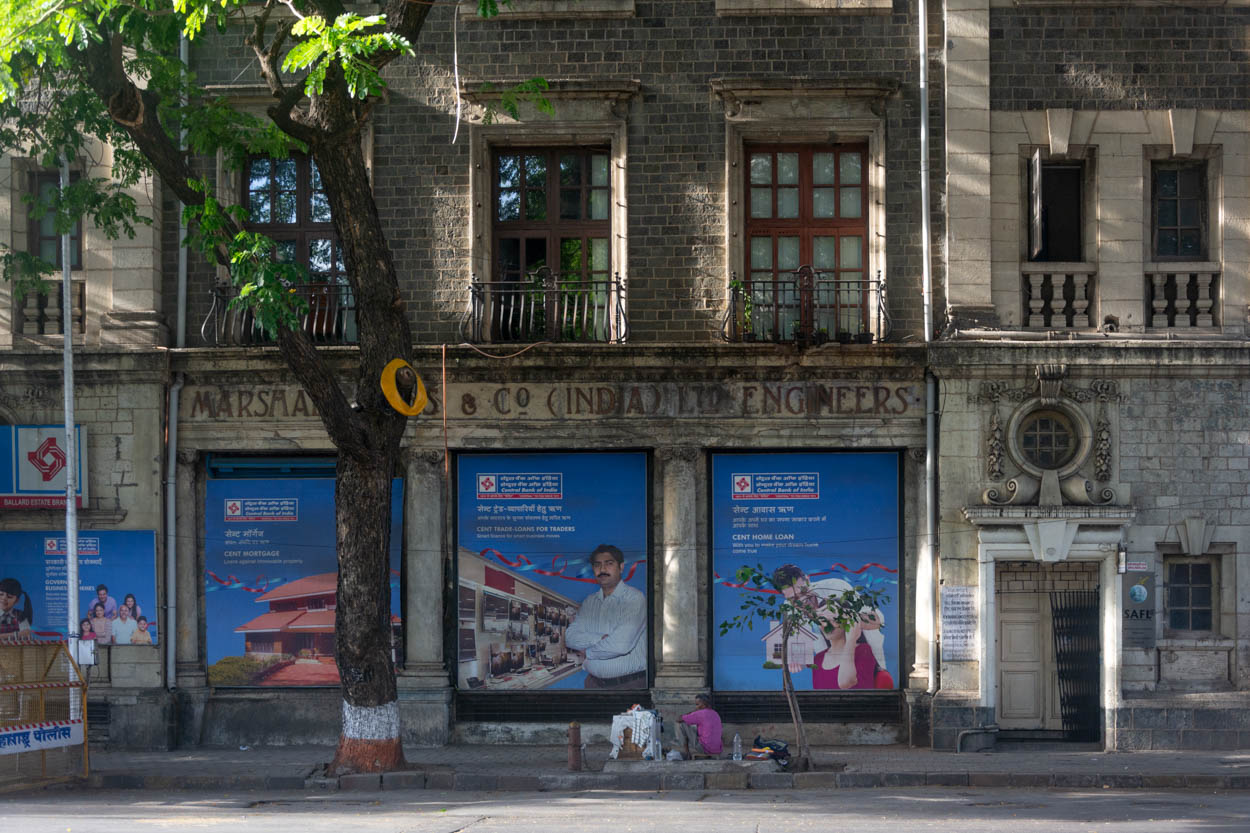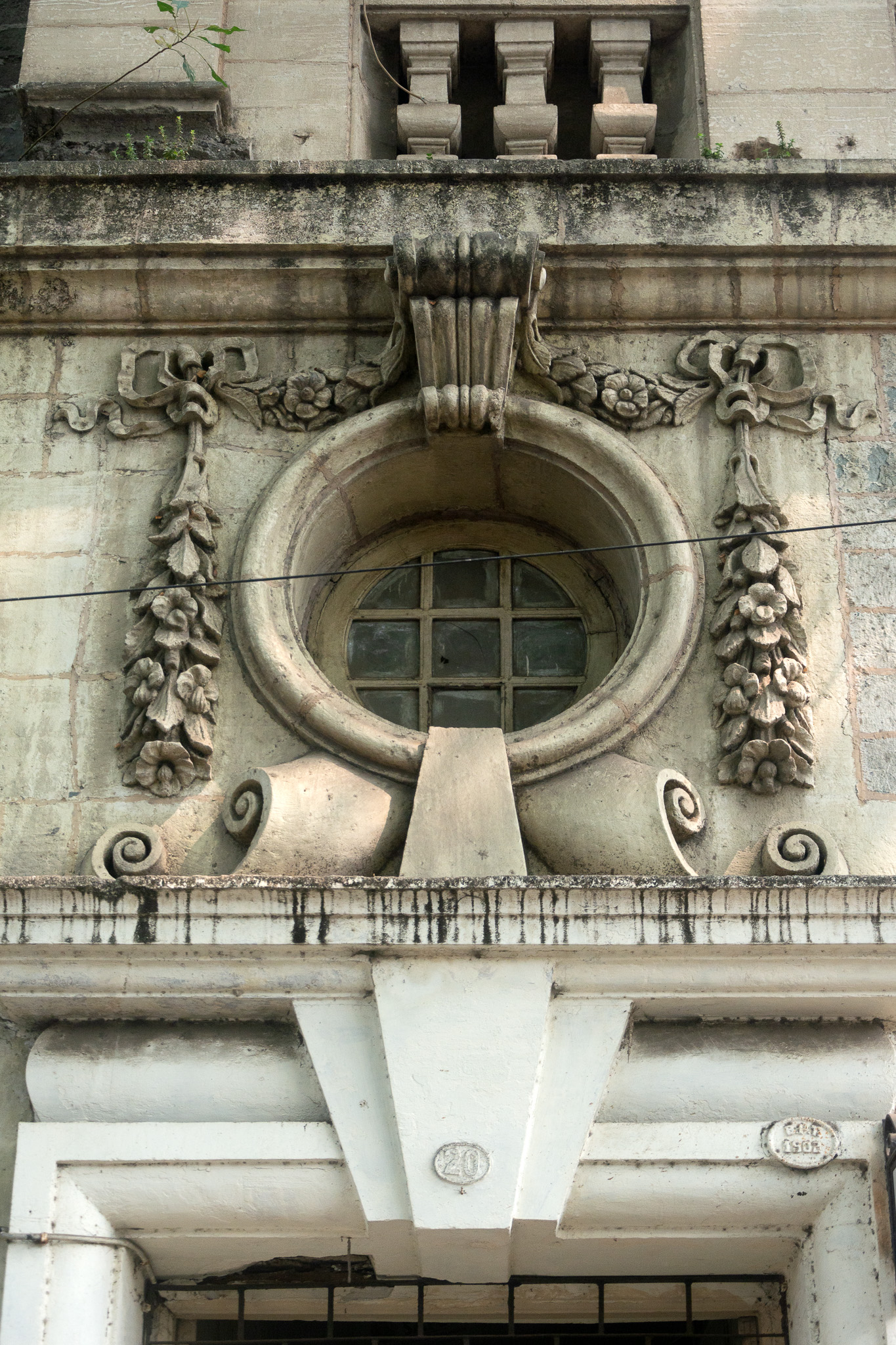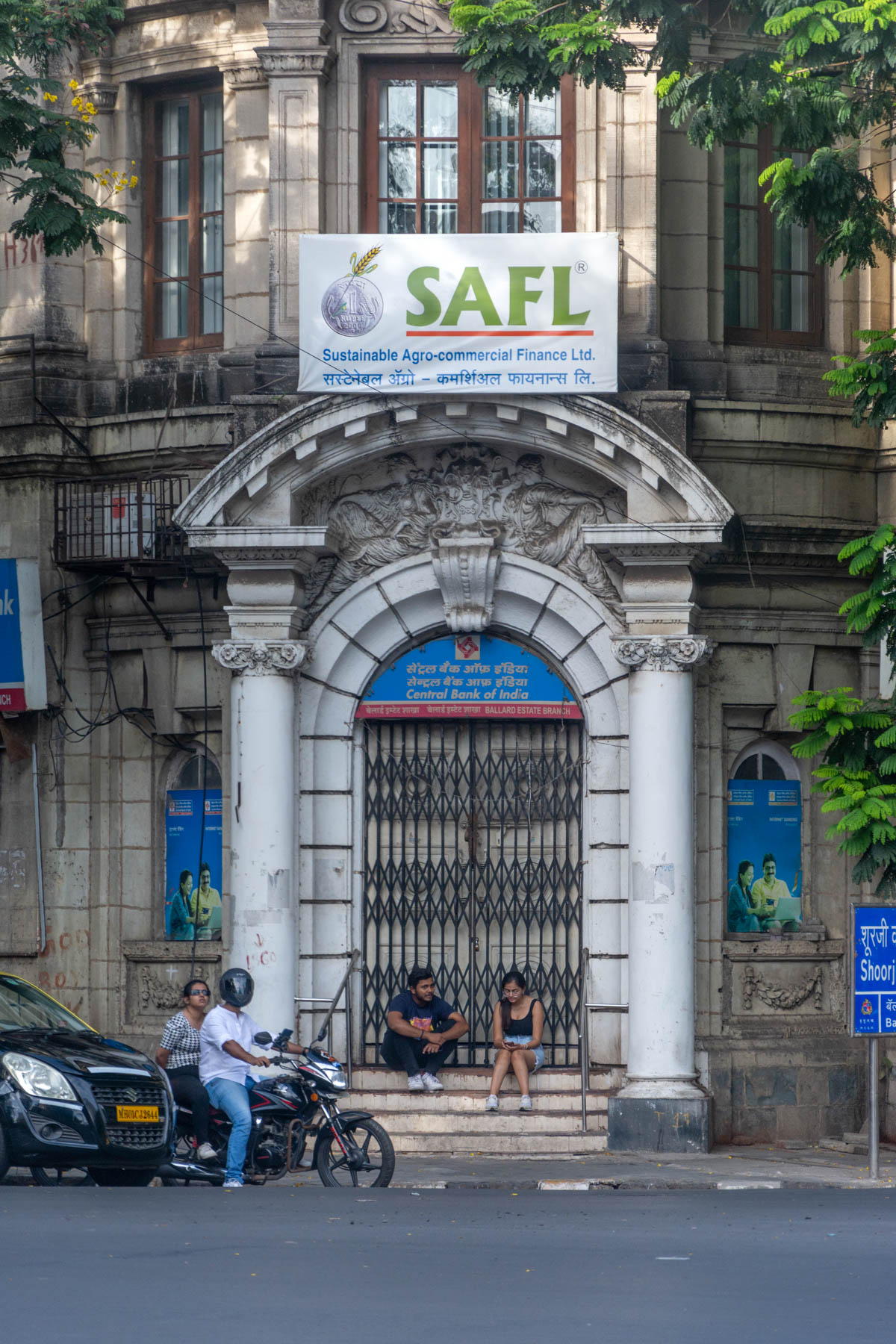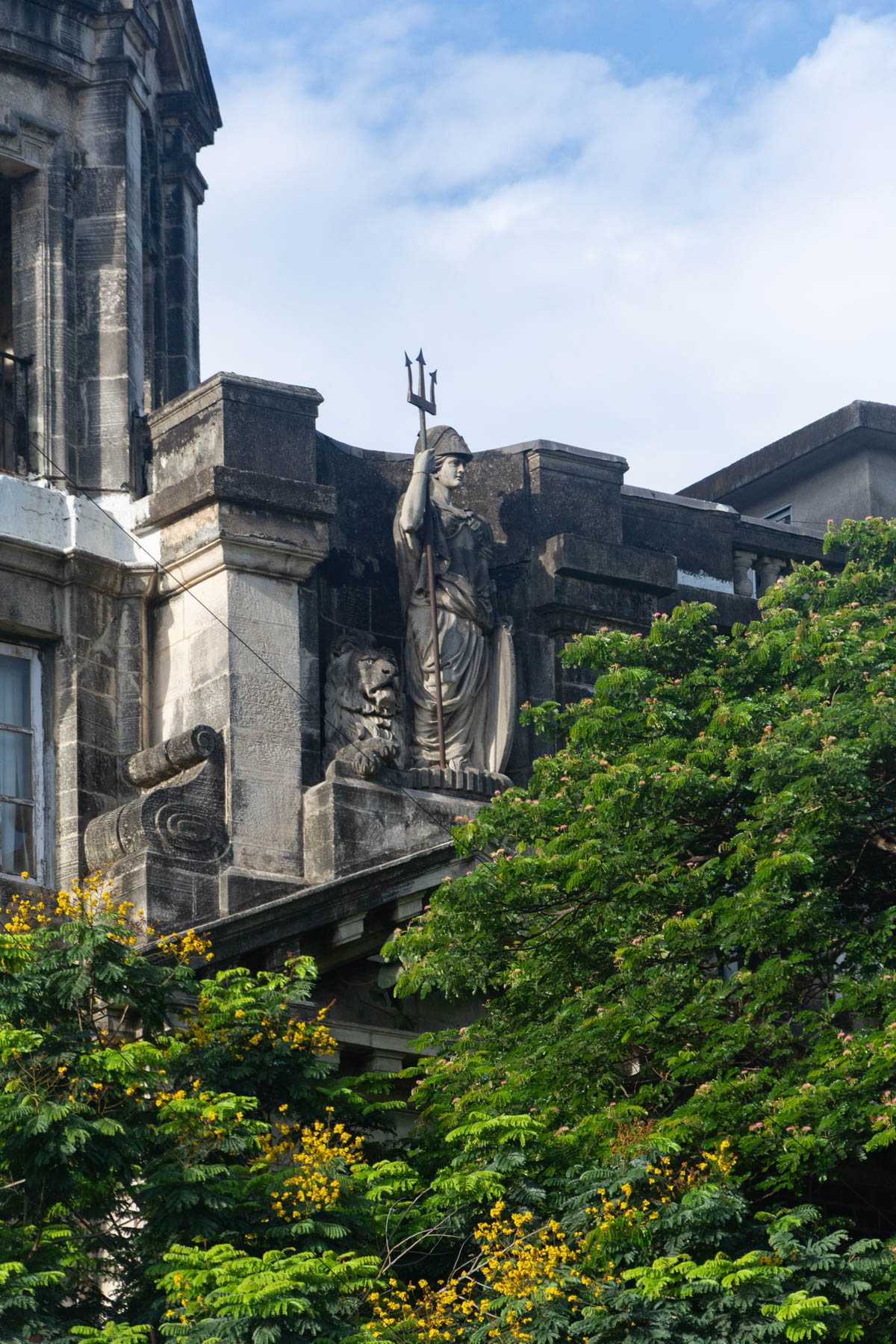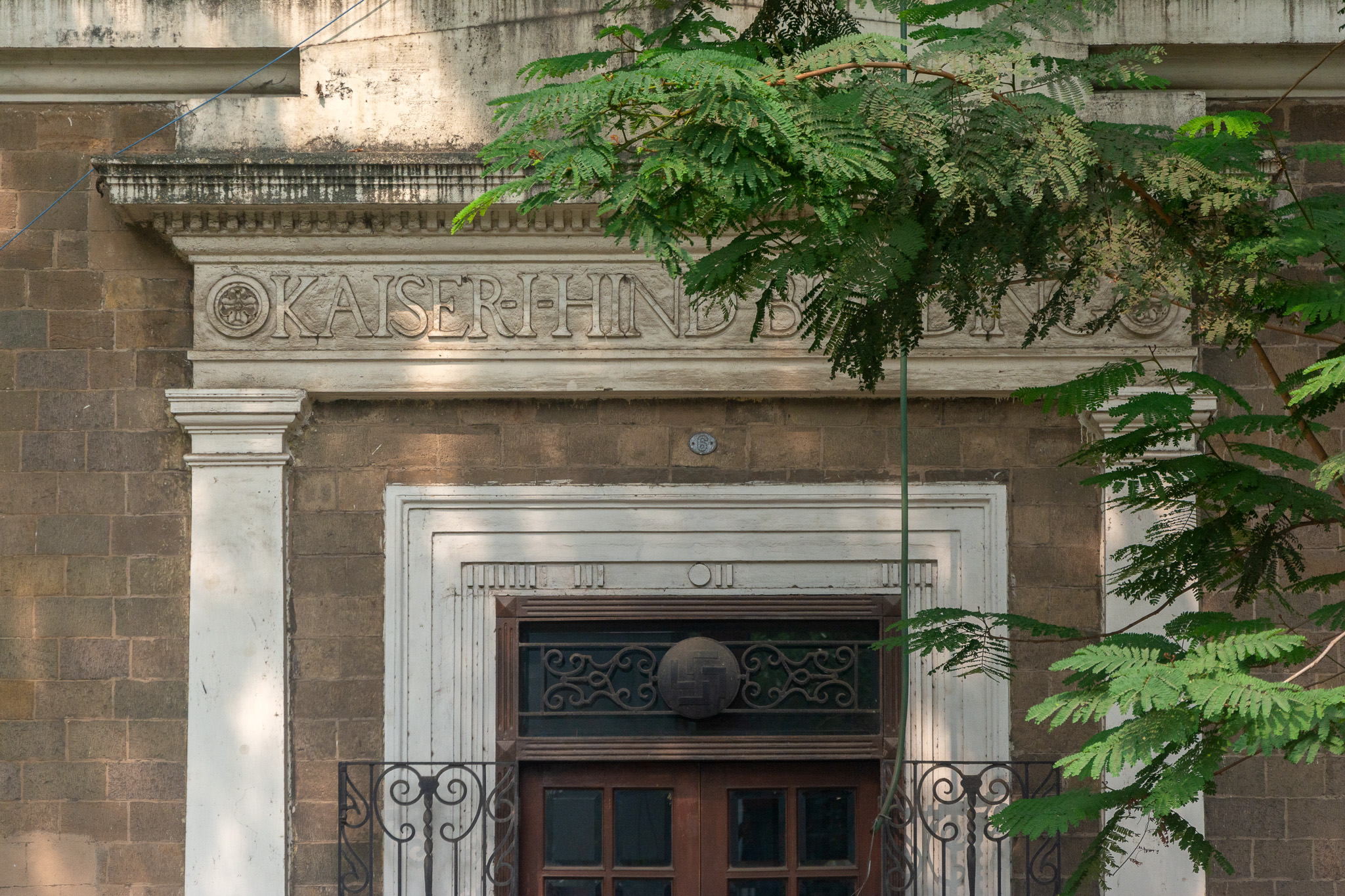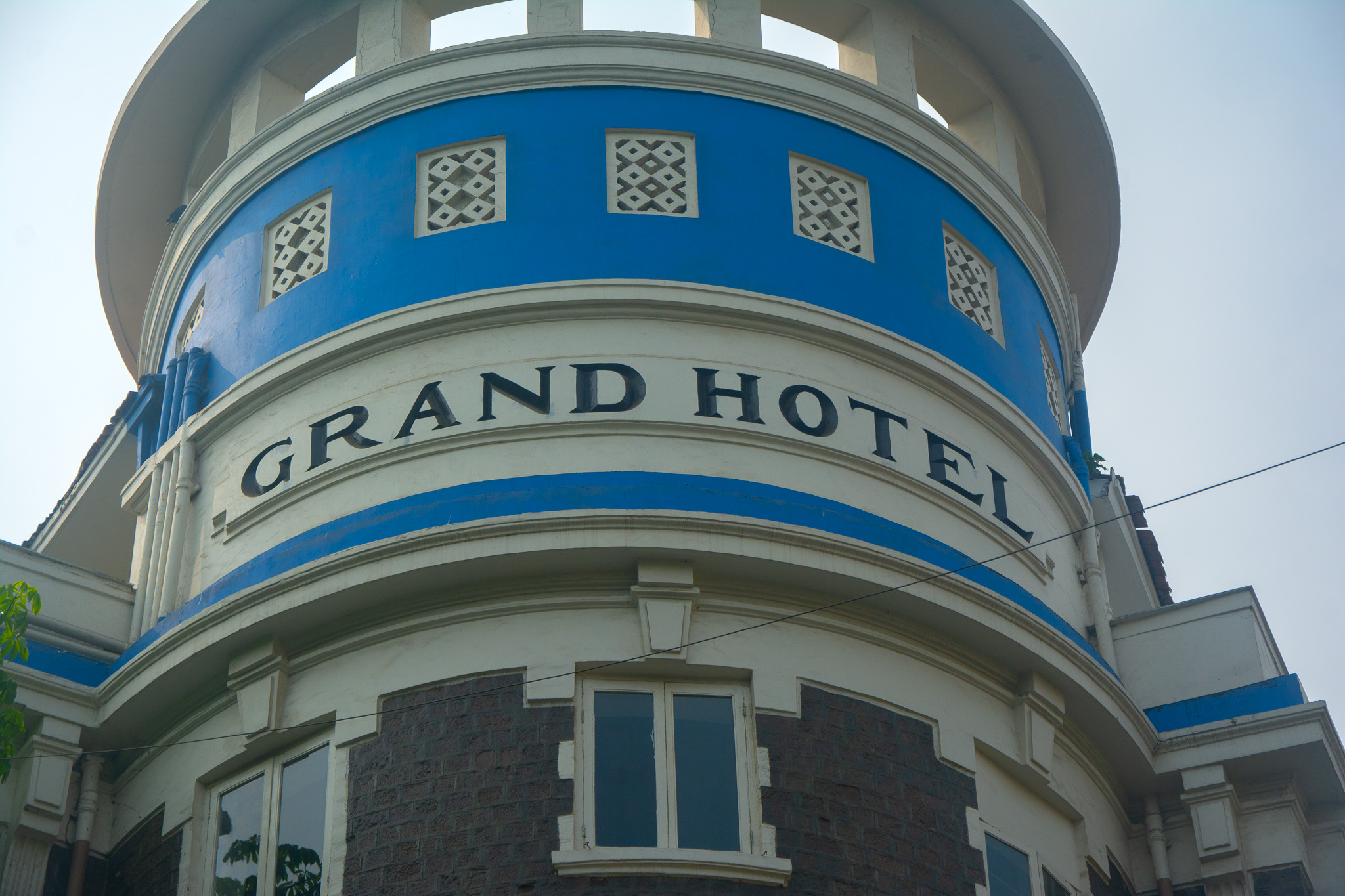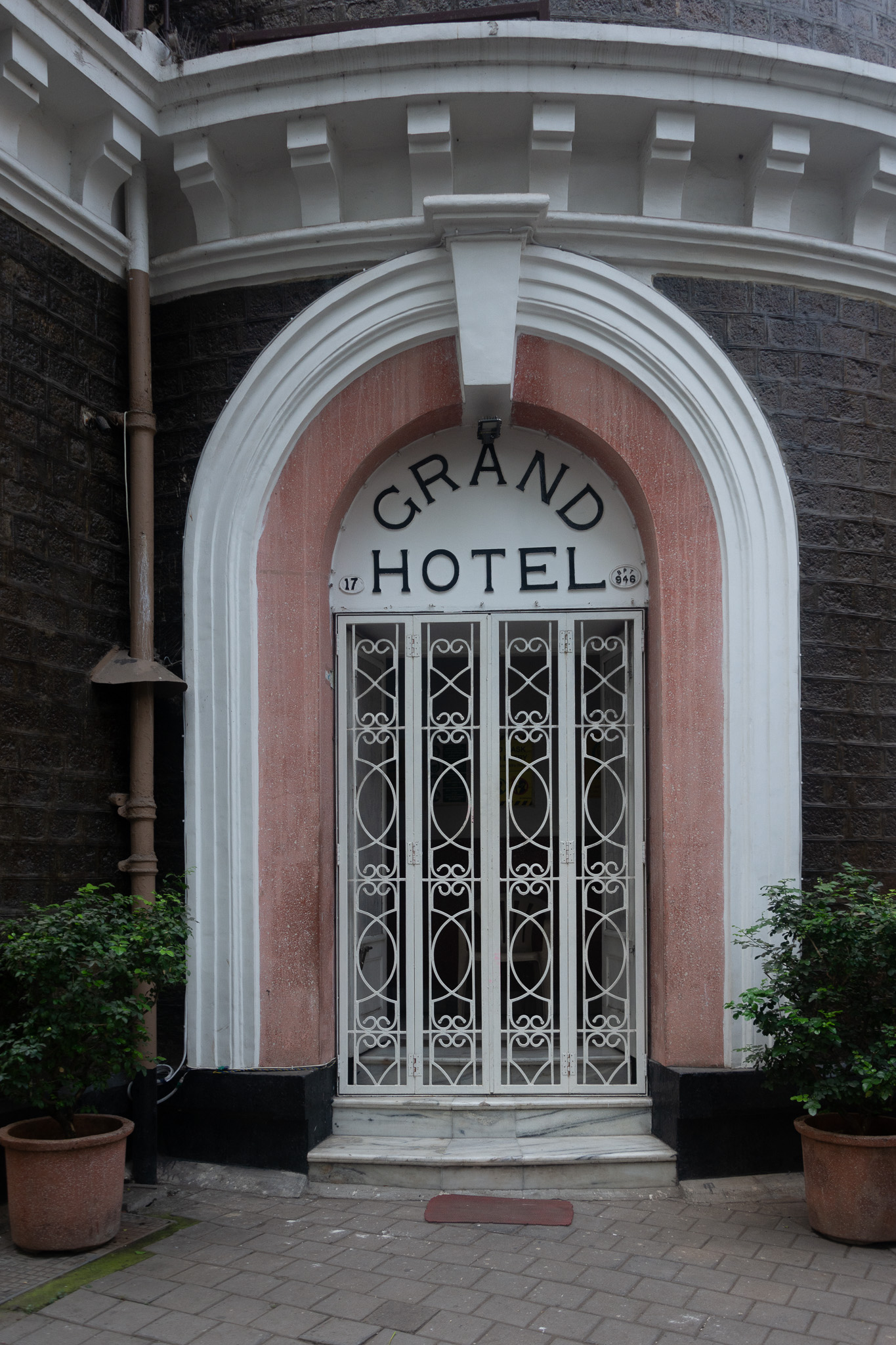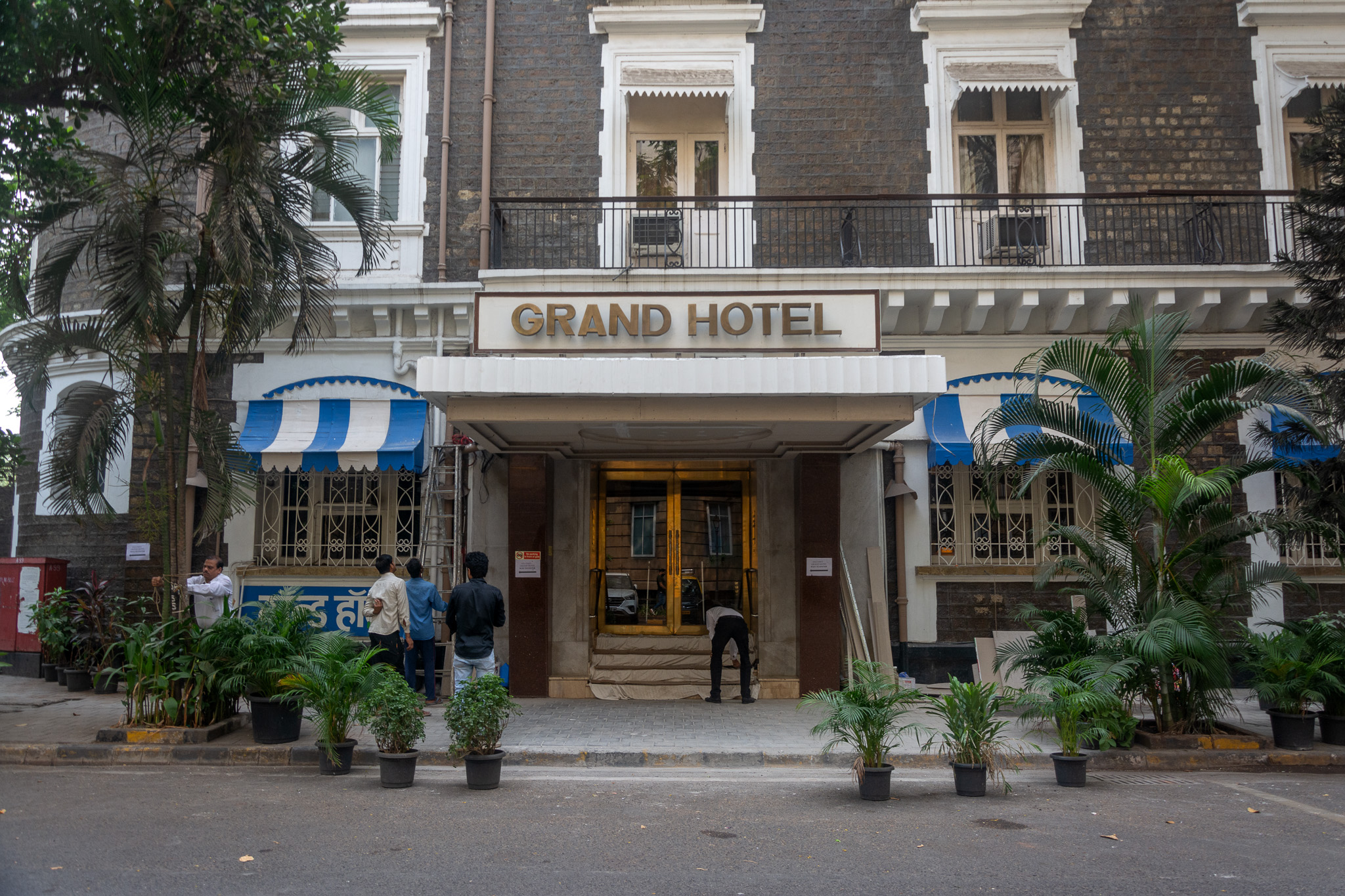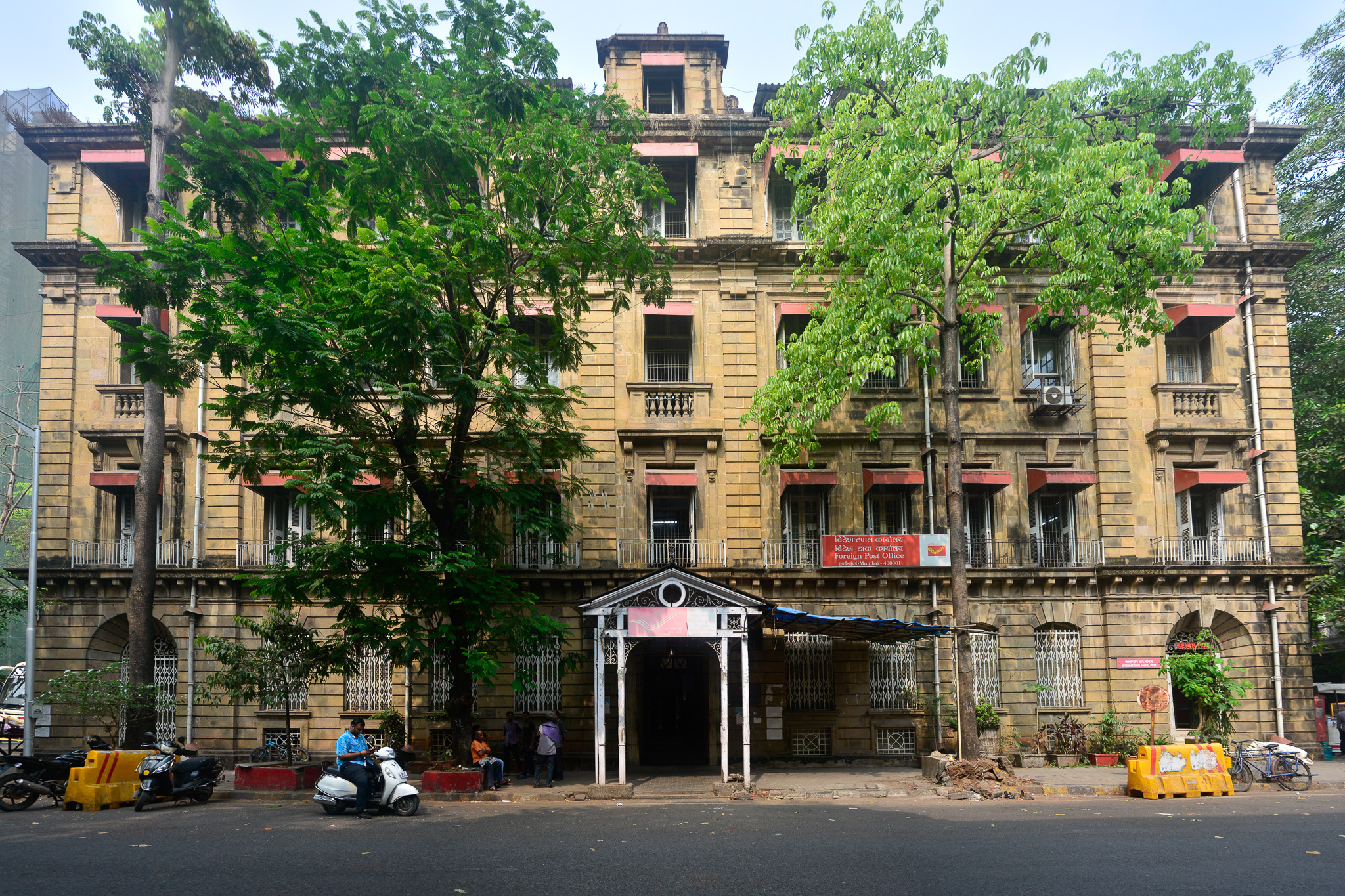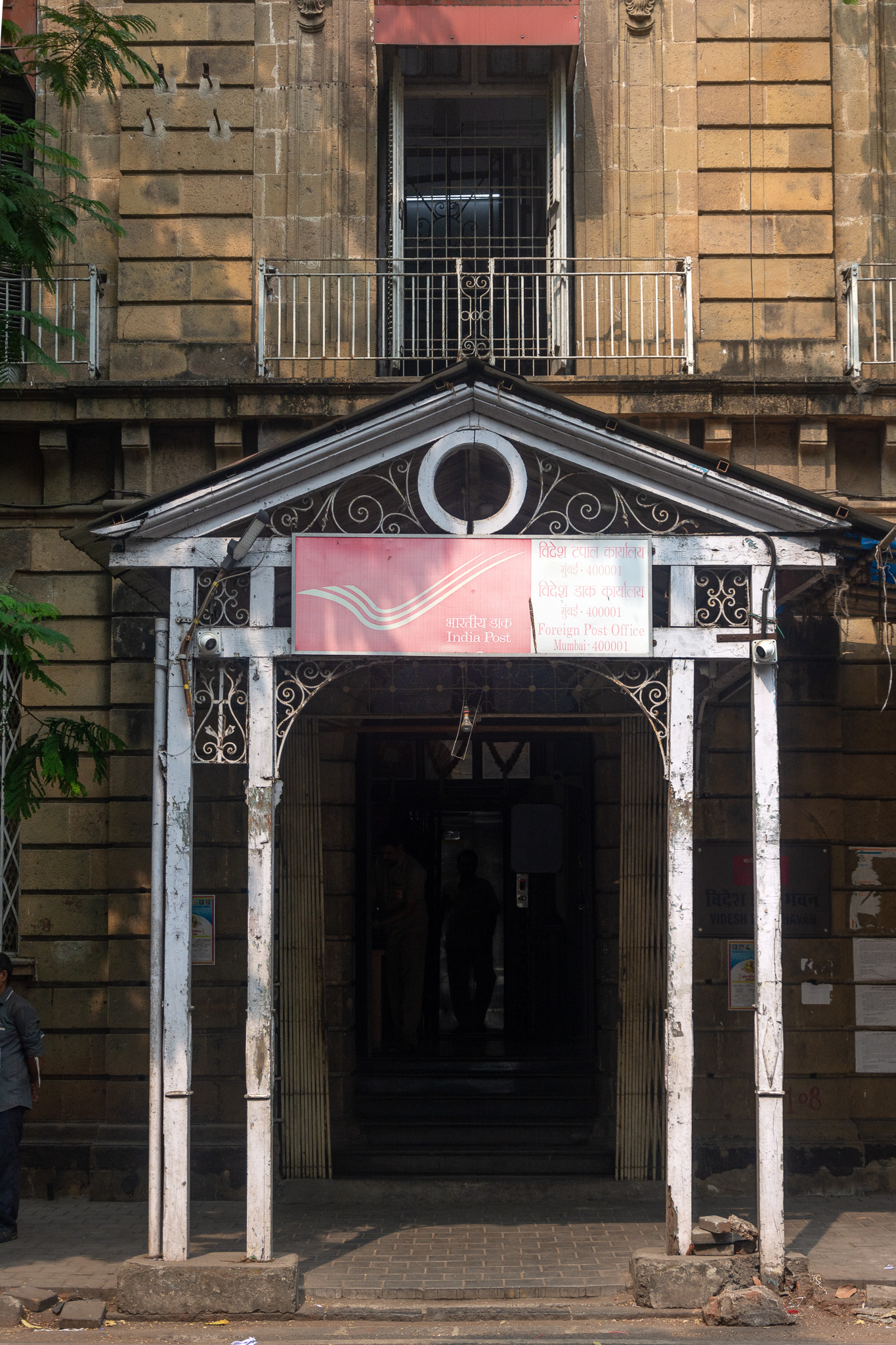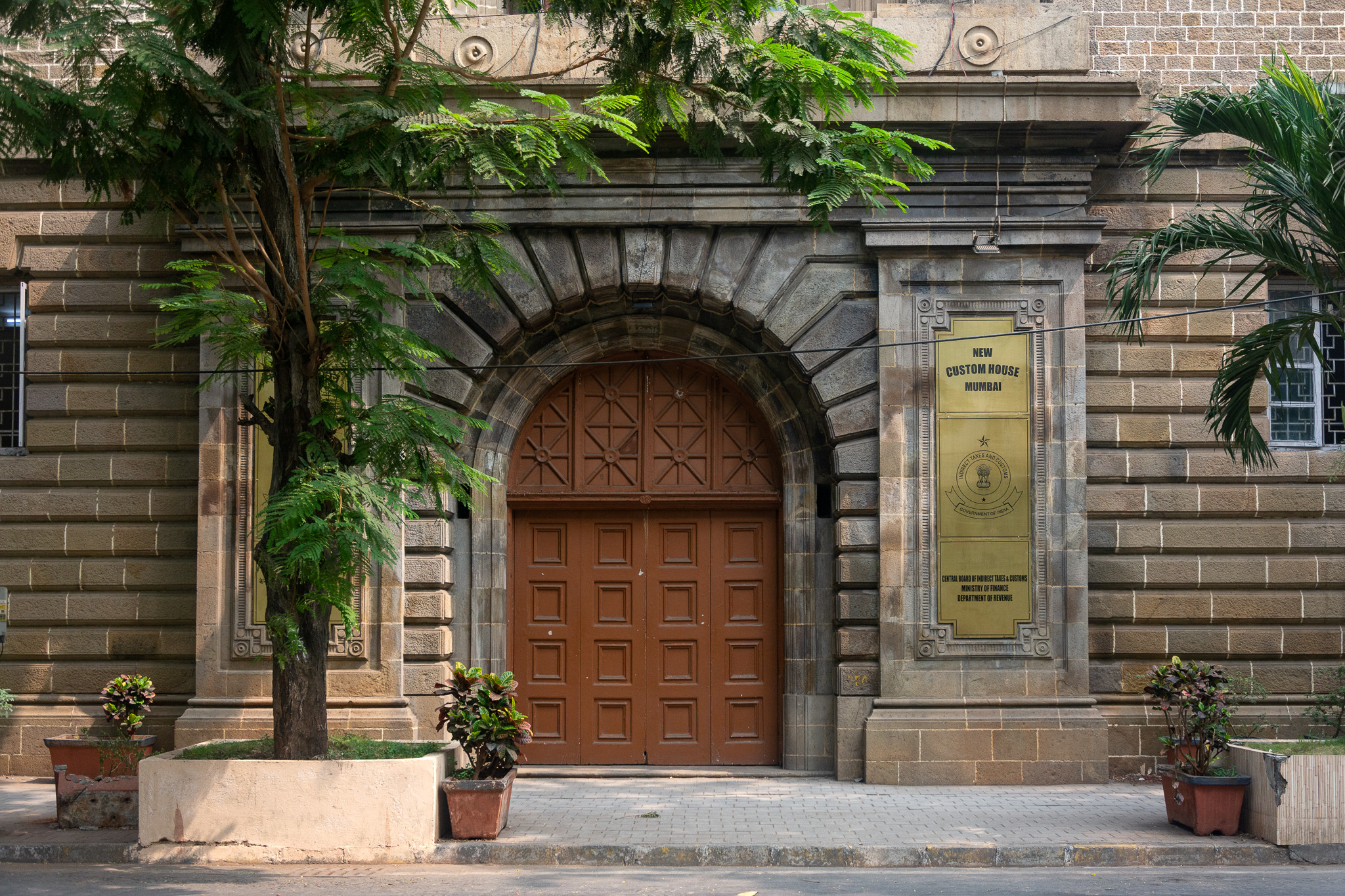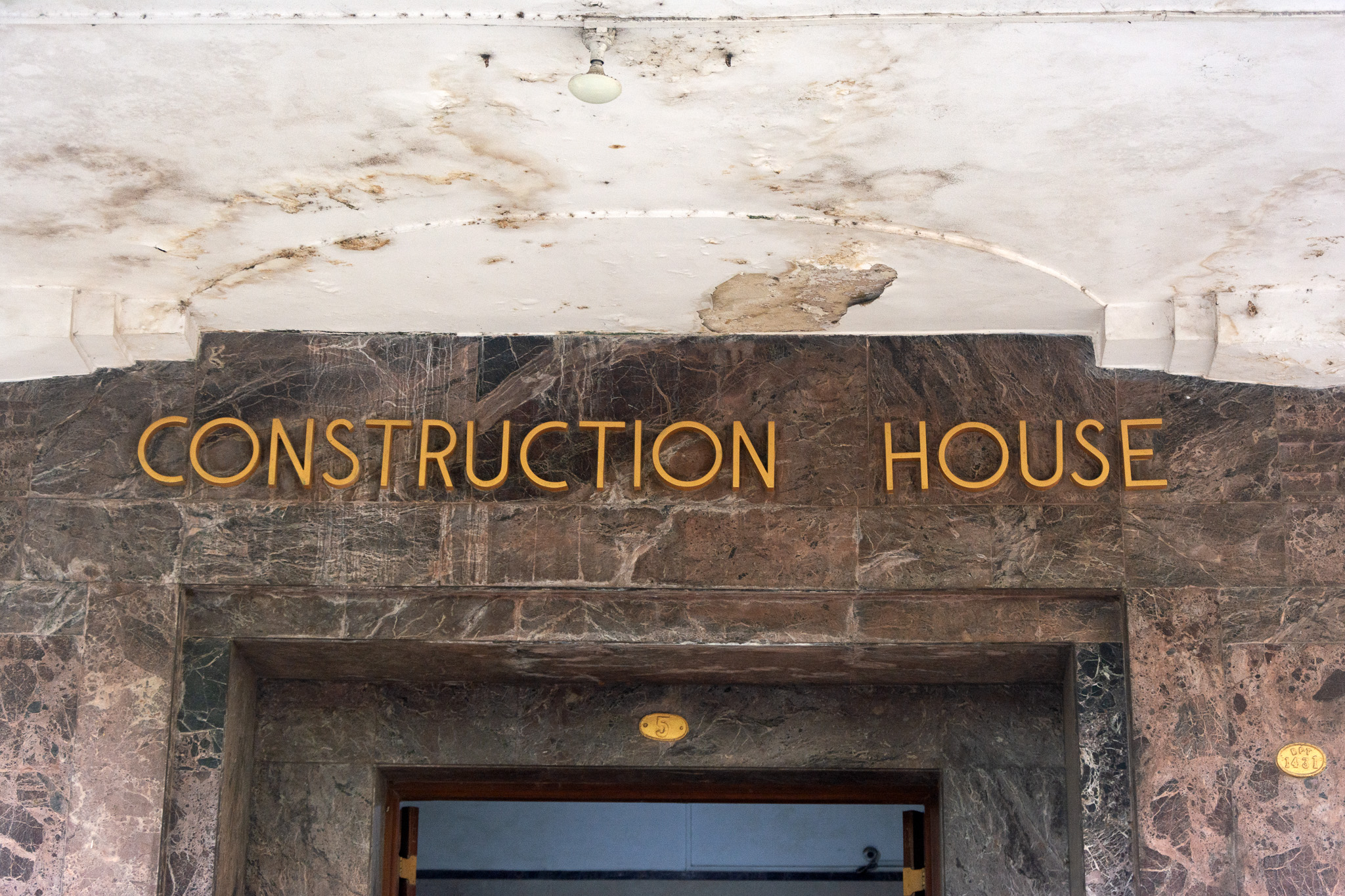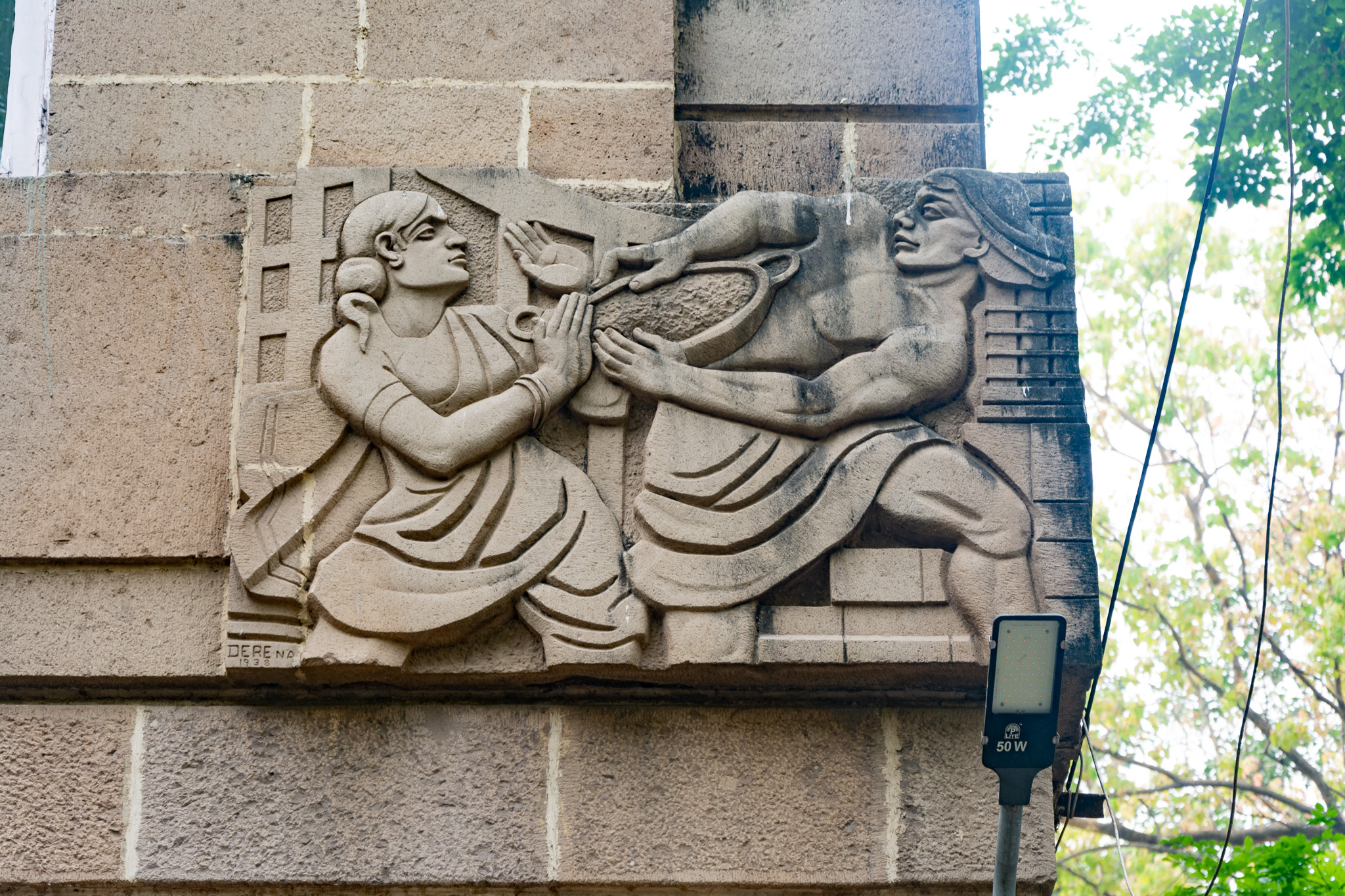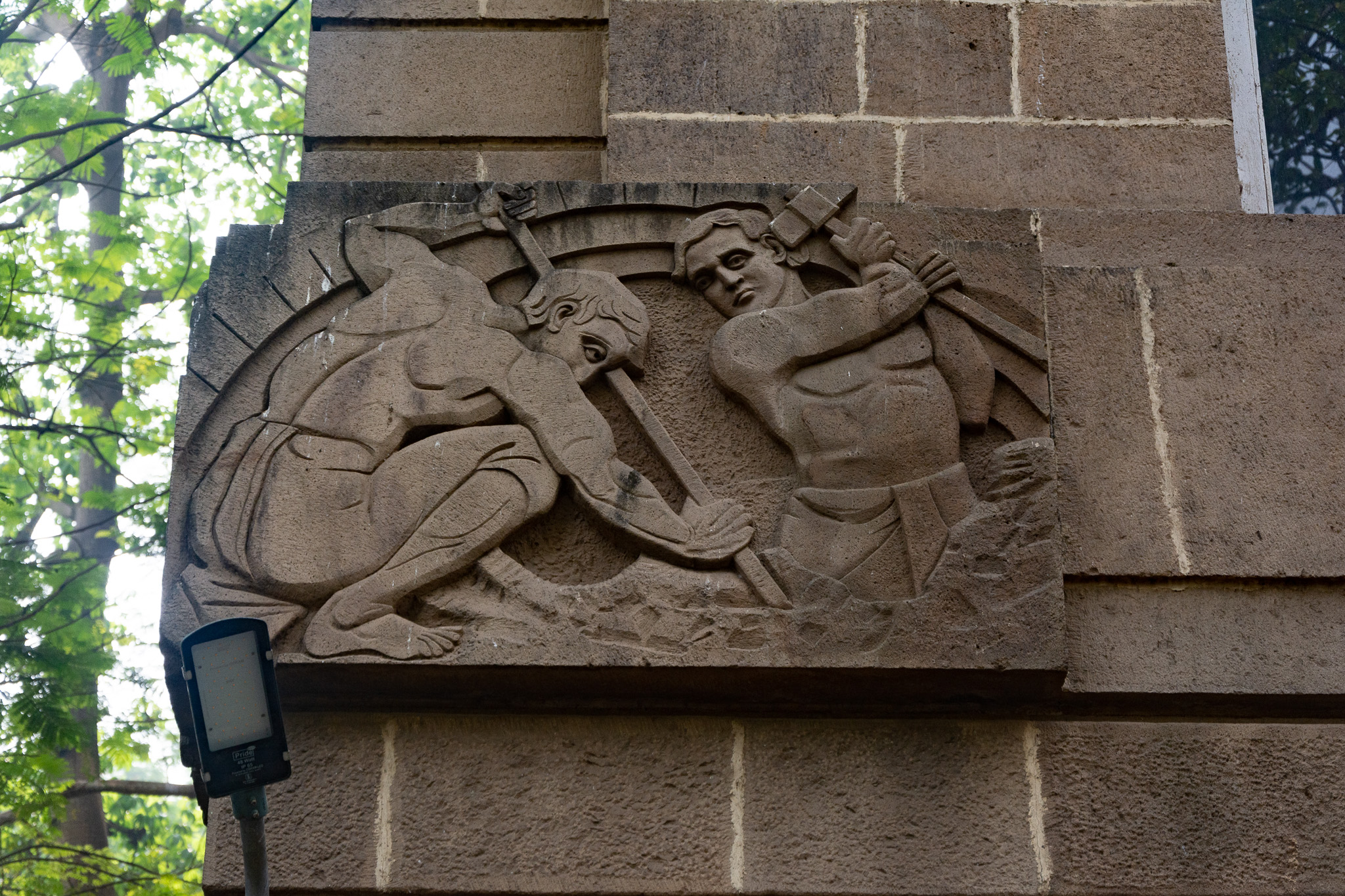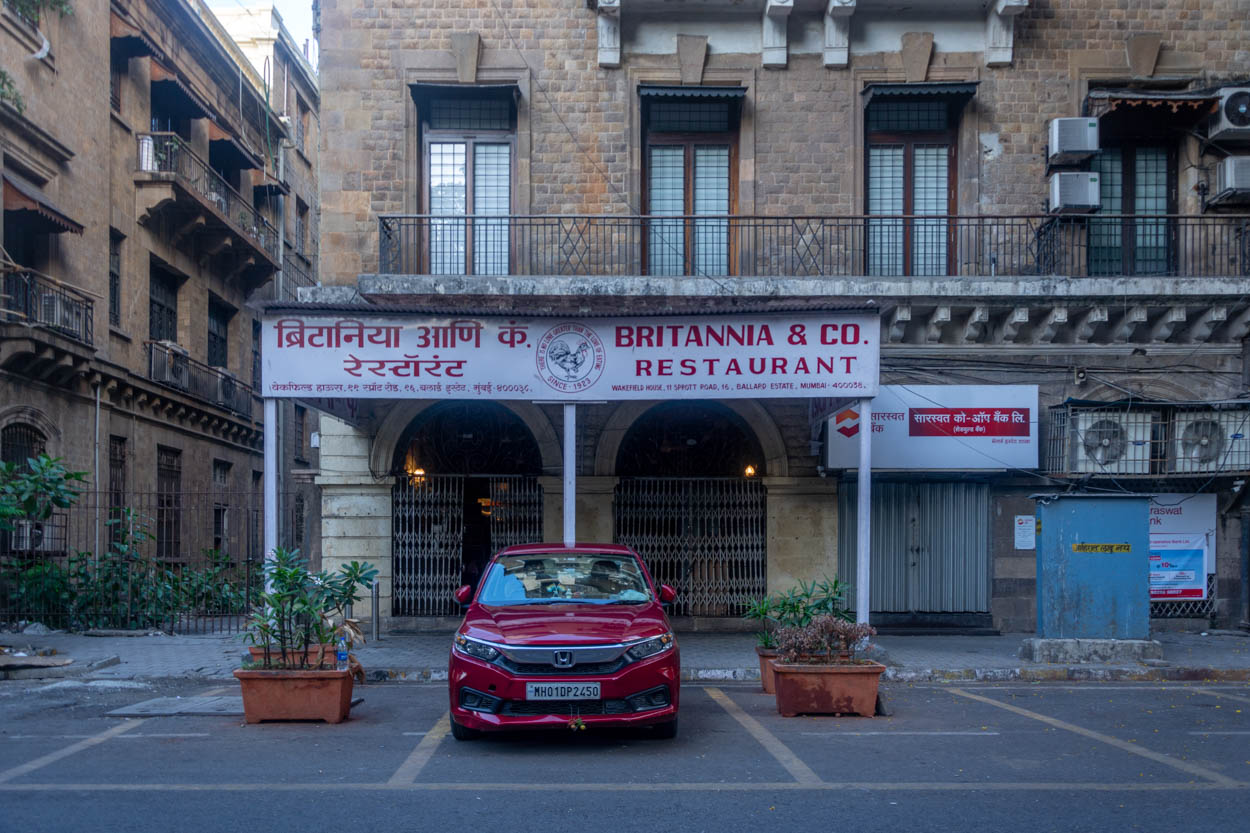Ballard Estate
Ballard Estate is one of the most coveted commercial areas in Mumbai, with broad, tree-lined thoroughfares and airy, spacious offices. Land reclamation for Ballard Estate started in 1904 using filling material excavated during the laying out of Alexandra Docks. The Bombay Port Trust tasked George Wittet with developing Ballard Estate. As a consulting architect, Wittet adopted the Baroque Revival style, which was in vogue in England during the reign of King Edward VII (r. 1901–10). Wittet laid out detailed control guidelines that mandated building height, uniformity of architectural style, and choice of building materials (for example, the extensive use of Malad stone). The guidelines also regulated the height of windows, each floor's height, structural design, finish, and so on.
The development of Ballard Estate persisted into the 1920s. However, with the demise of Wittet in 1926, the short-lived era of Edwardian Baroque architectural style ended, and Mumbai architects took to the new and emerging modernist Art Deco style. Ballard Estate, due to its controlled development in a tight timeframe on newly laid out vacant land, has the densest concentration of Edwardian Baroque buildings in Mumbai.
The 1930s and 1940s saw the continuation of land reclamation projects in various parts of Mumbai, such as the Back Bay Reclamation Scheme in Colaba. Ballard Estate set a template for the Art Deco buildings along Marine Drive and Oval Maidan, mandating a set of common decorative elements to maintain the uniformity of the Art Deco style.
John Archibald Ballard, the founder of Bombay Port Trust (now Mumbai Port Trust), established the corporation on 26 June 1873, and Ballard Estate bears his name. The Bombay Port Trust first built the present-day docks in the 1870s and further expanded them in phases on reclaimed land.
Karfule is the only Art Deco petrol pump in Mumbai, and it is one of two (Construction House is the other) buildings in Ballard Estate built in the late 1930s. GB Mhatre and Architectural Studio, one of the most prolific Art Deco architects of the era, designed the kiosk-like structure with its octagonal canopy and star-shaped terrazzo tiles in the interior.
Karfule is wordplay on 'Car Fuel'. The Sequeira family, now in its third generation, opened the pump in 1938. Gabriel Sequeira, who immigrated from Goa in the late 1920s, started the business. Until his death in 2001, at 98 years of age, Gabriel Sequeira remained actively involved in the Karfule business, visiting the pump regularly.
The tower at Karfule has a distinct Art Deco vertical accent. The tower originally served as a clock tower. The clock was replaced by the Caltex sign and, since 1978, the Hindustan Petroleum logo. The Caltex sign remains with the Sequeira family as part of the pump's historical archive of objects.
The Wadia Group owns Neville House, which bears the name of its former chairman, Neville Wadia (1911-1996). In 1952, he succeeded his father, Ness Wadia, as chairman of Bombay Dyeing, which started in 1879. Under Neville Wadia's leadership, Bombay Dyeing became one of India's largest textile producers and one of its most recognisable consumer brands.
Neville House is a prominent corner building at the intersection of R. Kamani Road and Currimbhoy Road. Yellowish brown regular-dressed stone forms the structure. The ground floor has semi-circular arches with prominent imposts and ornamental keystones.
Neville House is the headquarters of Bombay Dyeing and Co. Manufacturing Company Ltd., the flagship company of the Wadia Group, founded in 1736 by Lovji Nusserwanjee Wadia, who is considered the founder of the Mumbai shipbuilding industry. Lovji Wadia and his brother Sorabji Wadia built the Bombay dry dock, the first dry dock in Asia, in 1750.
The Imperial Chambers are located on SS Tolani Marg, formerly known as Wilson Road. The ground floor houses the finance department of the Mumbai Port Trust, which handles the pensions of its employees.
Commerce House is located on Currimbhoy Road. The first floor of the Commerce House hosts the contemporary art gallery Galerie Mirchandani + Steinruecke, representing some of the country’s most sought-after painters. The gallery opened in 2006.
The Bank of Baroda now occupies the Shaw Wallace building on Walchand Hirachand Marg. The ground floor has semi-circular arched windows, while the windows on the upper levels are rectangular and framed with plaster moldings. A pediment, supporting a balcony with balustrades on decorative brackets, stands above the central entrance of the Mackinnon Mackenzie and Co. building.
Mackinnon Mackenzie and Co. building
The yellowish-brown masonry of Mackinnon Mackenzie and Co. stands at the intersection of Walchand Hirachand Marg and Shoorji Vallabhdas Road. The imposing building overlooks the entrance to Indira Docks (former Alexandra Docks). Ornamental brackets flank the main doorway, supporting a capital and a marble statue on top.
Lettering, Mackinnon Mackenzie and Co. building
William Mackinnon (1823–93) and Robert Mackenzie (1810–53) formed Mackinnon Mackenzie and Co. In 1856, Mackinnon Mackenzie and Co. secured East India Company's mail contract between Kolkata and Rangoon and founded the Calcutta and Burmah Steam Navigation Company Ltd., the forerunner to the British India Steam Navigation Company.
Statue, Mackinnon Mackenzie and Co. building
The Mackinnon Mackenzie and Co. building features circular double-story columns that frame a nude marble statue of a bearded male figure.
Darabshaw House is a corner building at the intersection of Shoorji Vallabhdas Road and N Morarji Road. Originally, it housed the Regent Hotel, one of the two hotels in Ballard Estate at the time of its construction, along with the Grand Hotel. It now houses Condé Nast India's office.
The Darabshaw family has been involved in the shipping business since the early 19th century. Its founder, Darabshaw B. Dubash, established DBC and Sons (Gujarat) Private Limited in 1929 for operations as stevedores, ship agents, ship chandlers, and landing and shipping contractors. The seventh generation of the Dubash family currently runs it.
The entrance to Darabshaw House is a semi-circular, arched doorway with moldings. Above the entrance, a row of stone brackets supports a balcony that runs around the cornice. Note the bollard on the footpath. Originally installed to moor ships to the dock, bollards now control road traffic.
Arched windows, Darabshaw House
The ground floor of Darabshaw House features semi-circular arched windows with mouldings and projecting imposts, which were once open and allowed in natural light and air. The sealing of the windows is symptomatic of changes made in buildings at Ballard Estate in order to accommodate modern building requirements, like the installation of air conditioning units.
The Bharat Bhavan on Currimbhoy Road is named after Bharat Petroleum Corporation Limited, which has offices here and owns the building. The 1930s saw the completion of the building, which features a cantilevered porch, a characteristic of the period and common to many Art Deco buildings in Mumbai.
The Asian Building on R. Kamani Road houses offices of Life Insurance Corporation, New India Assurance Company, and Milton Housewares Private Limited, among other companies. Completed in 1932, the building draws inspiration from Art Deco, particularly the bold lettering adorning the cantilevered porch at the entrance.
Contractor building on R. Kamani Marg was completed in 1922. A mix of yellowish brown regular-dressed masonry with white plaster creates a strong contrast on the first and second floors. The roof has a pediment flanked by urns, as well as a low parapet with balustrades. On the upper levels, stone brackets support projecting balconies with balustrades.
The offices of Shapoorji Pallonji and Company Private Ltd. are housed in Contractor Building. It operates in construction, real estate, textiles, engineered goods, home appliances, shipping, power, and biotechnology. The grandson of founder Pallonji Mistry (1929-2022), also known as Pallonji Mistry, led the company until 2012, when he announced his retirement and his son Shapoor Mistry took over.
Before Ballard Estate was developed, a row of jetties served as docking points for boats arriving from ports on the Konkan and Malabar coast, such as Cochin, Mangalore, Kumta, and Calicut. Consequently, the street that led to the jetty was named after these places. While some streets, such as Cochin Street, have undergone renaming, others have maintained their original names.
Adi Marzban Path, named after Adi Pherozeshah Marzban (1914–87), is where Jam-e-Jamshed's office (Marzban was its editor) originally stood. Fardoonjee Marzban, Adi's great-grandfather, launched Jam-e-Jamshed, Asia's second oldest running newspaper, in 1832. In 1964, Adi Marzban, a doyen of Parsi theatre, received the Padma Shri.
RPL House on Walchand Hirachand Marg was earlier called Shahibagh House, named after the Shahibagh Palace in Ahmedabad. The building is made of Malad stone with an arcade of semi-circular arches on the ground floor. Upper-level windows have extended overhangs. Its facade was restored by conservation architect Vikas Dilawari in 2000.
Alexandra Dock underwent construction from 1904 to 1914. It was named after Queen Alexandra of Denmark (1844-1925), Empress of India from 1901-1910, and wife of King-Emperor Edward VII. The then Prime Minister of India, Indira Gandhi (1917–1984), inspired the renaming of Alexandra Dock to Indira Dock in January 1972.
Mumbai International Cruise Terminal
In 1970, a new passenger berth was commissioned at the Ballard Pier Extension for luxury liners. It currently serves as the Mumbai International Cruise Terminal, expected to be commissioned by July 2024. The terminal will have a capacity of handling 200 ships and 10 lakh passengers per year. At the dock, two cruise ships will be able to berth at a time.
The triple-arched Ballard Bunder Gatehouse was built in 1920 to commemorate the Bombay Port Trust's repositioning of the Ballard Pier. After independence, the gatehouse became part of the Naval Dockyard, but fell into disuse. In 2005, the Western Naval Command restored the building, converting it into a nautical-themed museum.
The Hague Building was constructed in 1919 to house the head office of Pathé Frères, the Paris-based film equipment and production company, as well as a major producer of phonograph records. In 1908, Pathé invented the newsreel that was shown in cinemas before a feature film. In 1934, the building was renamed Hague with a change of ownership.
The first phase of Ballard Estate's development in the 1890s saw the construction of the imposing Port House (Old Bombay Port Trust building) on Shoorji Vallabhdas Road. However, in 1911, the ever-increasing maritime traffic prompted the construction of a new custom house adjacent to the Port House.
The Port House (Old Bombay Port Trust building) features a triple-arched projecting porch. The semi-circular arches have projecting imposts and prominent keystones; the central arch is wider than the ones on the sides. The use of grey ashlar masonry blocks and brown sandstone accents provides strong colour contrast.
The presence of medieval ships projecting from the wall on the upper level of the porch highlights the maritime nature of the Port House (Old Bombay Port Trust Building). Two ships jut out of the wall, with only half of their length visible. Both feature a winged angel figurehead attached to the bow (the ship's forward-most part).
Indian Mercantile Chambers on R Kamani Marg hold offices of the Maharashtra Maritime Board (MMB). The establishment of MMB in 1996 aimed to provide autonomy and sufficient flexibility for the development and management of small ports in Maharashtra. MMB is responsible for managing ports and harbors, initiating inland water transportation, granting licenses for crafts, regulating and controlling traffic, among other tasks.
Port Trust War Memorial is located on Jamadar Bapu Laxman Chowk, named after Bapu Laxman Lamkhade. In 1964 and 1979 (posthumously), he became the first Customs officer to receive the President's Award for his significant contributions to the seizures of opium, gold, and counterfeit currency. Smugglers feared him, earning him the nickname 'Kohinoor of the Indian Customs'.
In 1919, the Port Trust War Memorial emerged as a traffic roundabout, situated at the intersection of three streets: SS Ramgulam Road, N Morarji Road, and Shoorji Vallabhdas Road. The pedestal is irregularly hexagonal, with commemorative plaques fixed on the three larger sides. The pedestal supports a circular, fluted column topped with a metal lamp.
Commemorative plaque, Port Trust War Memorial
The development of Ballard Estate coincided with the outbreak of World War I (1914-18) in which India sent troops on behalf of the British Empire. The Port Trust War Memorial commemorates the Port of Bombay's significant contribution to World War I. It mentions the passage of 18,70,000 troops and personnel through the docks to different theatres of the war. The first transport left Bombay on August 21, 1914.
Commemorative Plaque erected by Bombay Port Trust
The trustees of Bombay Port Trust erected commemorative plaques in honour of officers who sacrificed their lives in WWI. The names include Captain Eric Stuart Dougall (died 14th April 1918), 2nd Lieutenant Ronald Edward Wilson (died 11th March 1916), and Giacinto Romagnoli (died 11th October 1916). For his deeds on 10 April 1918 at Messines, Belgium, Dougall received the Victoria Cross. Prior to his war service, Dougall was an assistant engineer at Bombay Port Trust.
Winged Lions, Port Trust War Memorial
The Port Trust War Memorial features winged lions. The motif is an ancient one, having origins in Mesopotamia and Assyria. It appeared on the flag of the Republic of Venice, a major maritime power during the Middle Ages. Many buildings in Mumbai, designed by architects inspired by Venetian Gothic architecture, feature the winged lion motif.
Facade, Marshall Sons and Co. building
The imposing Marshall Sons and Co. is a corner building at the intersection of Shoorji Vallabhdas Road and Shahid Bhagat Singh Marg. Architect Charles Frederick Stevens, son of the late Frederick W. Stevens, Mumbai's most celebrated architect during the Victorian Gothic phase, designed the building in the Edwardian Baroque style.
Lettering, Marshall Sons and Co. building
Marshall Sons and Co., an engineering company, provided lettering services. It now has the Central Bank of India offices on its ground floor. This 1906 building was one of the first at Ballard Estate that was built during development. The Ionic order pillars are shown here, with twin volutes as pillar capitals.
Window, Marshall Sons and Co. building
The Marshall Sons and Co. building features a keystone with floral scrolls emerging from it over the oeil-de-boeuf (Ox eye window). The Edwardian era (1901–1910) saw the use of exaggerated keystones as a typical Neo-Baroque architectural detail in buildings.
Entrance, Marshall Sons and Co. building
The Marshall Sons and Co. building's entrance is at the intersection of Shoorji Vallabhdas Road and Shahid Bhagat Singh Marg. The entrance features a round pediment with two life-size female figures seated in the spandrel. Above the keystone, it bears the year of its construction, 1906.
Britannia, Marshall Sons and Co. building
On either side of the Marshall Sons and Co. building, two statues of Britannia stand aloft, one facing Shoorji Vallabhdas Road and the other facing Shahid Bhagat Singh Marg. Britannia holds a trident (a symbol of maritime supremacy) and a shield. She is wearing a Corinthian helmet, and the British Lion sits at her feet. Britannia is a personification of Great Britain, a symbolic figure that first emerged during the Roman occupation of Britain.
Lettering, Kaisar-i-Hind Building
The Kaisar-i-Hind building, which houses the Enforcement Directorate, features lettering. The ornamental pilasters on either side are of the Tuscan order (the plain shaft rests on an unadorned base and has a simple capital). The metal grille on the lintel has a swastika on a circular base. Similar swastikas are also found on the building's windows.
Facade, Kaisar-i-Hind Building
Kaisar-i-Hind is located on Currimbhoy Road, named after Ebrahim Currimbhoy (1839–1924), a Gujarati Khoja businessman who founded E. Pabaney & Co. and made a fortune in the opium trade with China. The Port of Bombay nominated him as a Trustee. The British awarded E. Currimbhoy knighthood (1905) and baronetcy (1910) for his services.
Located on a corner plot, the Grand Hotel has a round edge with a circular tower on top. George Wittet, a prominent architect in Mumbai, designed the hotel and several other landmarks in the city, including the Prince of Wales Museum, Gateway of India, Wadia Maternity Hospital, Institute of Science, and numerous buildings in Ballard Estate.
Lettering at the entrance gateway of Grand Hotel
The opening of the Suez Canal in 1869 resulted in shorter travel times from India to Europe, revolutionizing India's maritime trade. Improved connectivity also brought more European tourists to Mumbai, and they stayed at the Grand Hotel, located close to Ballard Pier, from which ships disembarked passengers.
The Grand Hotel features lettering adorning its canopy and entrance. The hotel, which opened in 1923, was the most sought-after accommodation and dining place in Mumbai. At the time, it was one of only two hotels in Ballard Estate (the Regent Hotel was the other), developed primarily as a business and commercial district.
The Grand Hotel has ground-level windows with outward projecting canopies painted in alternating bands of blue and white. Above the windows, bracketed cornice runs all around the building, supporting balconies on the first floor (as well as on the third-floor level). Stone brackets support the balconies on the second floor.
Hindustan Bhavan, located on S. Vallabhdas Road, is named after Hindustan Petroleum Ltd., the building's owner. Two sets of twin pillars support the entrance porch. The upper-level windows have weather shades supported on brackets. The first-floor windows feature projecting balconies supported by a cornice that runs around the building.
Videsh Dak Bhavan, also known as the Foreign Post Office (FPO), is in Irwin House, named after Lord Irwin, Viceroy of India (1926-31). The FPO enables Post Parcels to import and export goods. The Postal Department also provides access to Customs for parcels that arrive via mail for examination, assessment, clearance, and so on.
The India Post hoarding at the front partially hides the semicircular arched entrance to the Videsh Dak Bhavan, which boasts a porch with wrought iron ornamentation. The porch projects outward and has a sloping roof.
A semicircular arch with rusticated masonry welcomes visitors to the New Custom House, setting it apart from the upper levels that feature regular ashlar masonry (dressed). Rustication is the deliberate use of rough or patterned surfaces, a technique extensively used by architects during the Edwardian era (1901–1910) and features in many Ballard Estate buildings.
The Walchand Group acquired the vacant land on which Construction House stands in 1936. Construction House's contrasting look, inspired more by the Art Deco style of the late 1930s than the Edwardian Baroque of the early 20th century, is a result of its construction more than two decades after Ballard Estate's development.
Construction House is the headquarters of Hindustan Construction Company, a multinational engineering and construction company founded by industrialists and the founder of the Walchand Group, Walchand Hirachand (1882-1953). Among his many businesses, he established India's first modern shipyard, aircraft factory, and car factory.
Bas Relief, Construction House
The visual theme Messrs. Gregson, Batley & King wanted to highlight was the role of the Walchand Group's role in building landmark infrastructure projects. They used bas-reliefs of Indian men and women engaged in manual labour affixed on the corners of the Construction House.
Bas Relief at Construction House
Hindustan Construction Company had leased the plot from the Bombay Port Trust for 99 years. For Construction House, they commissioned Messrs. Gregson, Batley & King, who had designed several notable Art Deco buildings in Mumbai, including Dhanraj Mahal, Windsor House, Cricket Club of India, and Breach Candy Hospital, among others.
Rashid Kohinoor, who had emigrated from Iran to Mumbai in search of a better life, founded Britannia and Co. in 1923 on the ground floor of Wakefield House. Boman Kohinoor (1923-2019), his son and Britannia's long-time owner, was proud of the cafe's historic link to Britain and its royal family. He called himself the ‘Royal Family’s No. 1 fan’.
Wakefield House is located on SS Ramgoolam Marg (formerly Sprott Road), named after Mauritius' founding father, Seewoosagur Ramgoolam, often referred to as Chacha Ramgoolam or SSR. He served as the nation's first Prime Minister (1968–1982) and had roots in Bihar, from where his father had arrived in Mauritius as a labourer in 1896.



